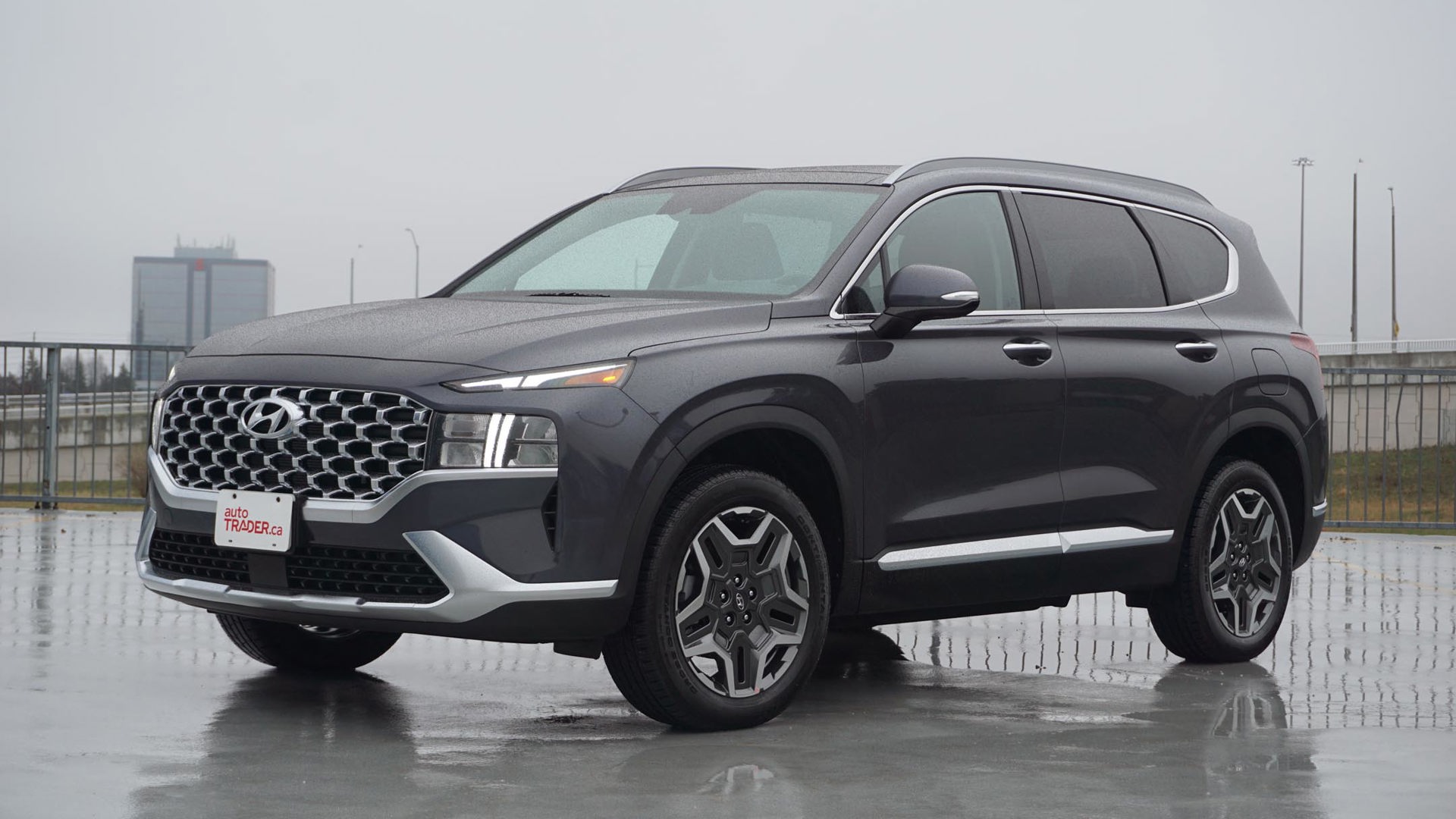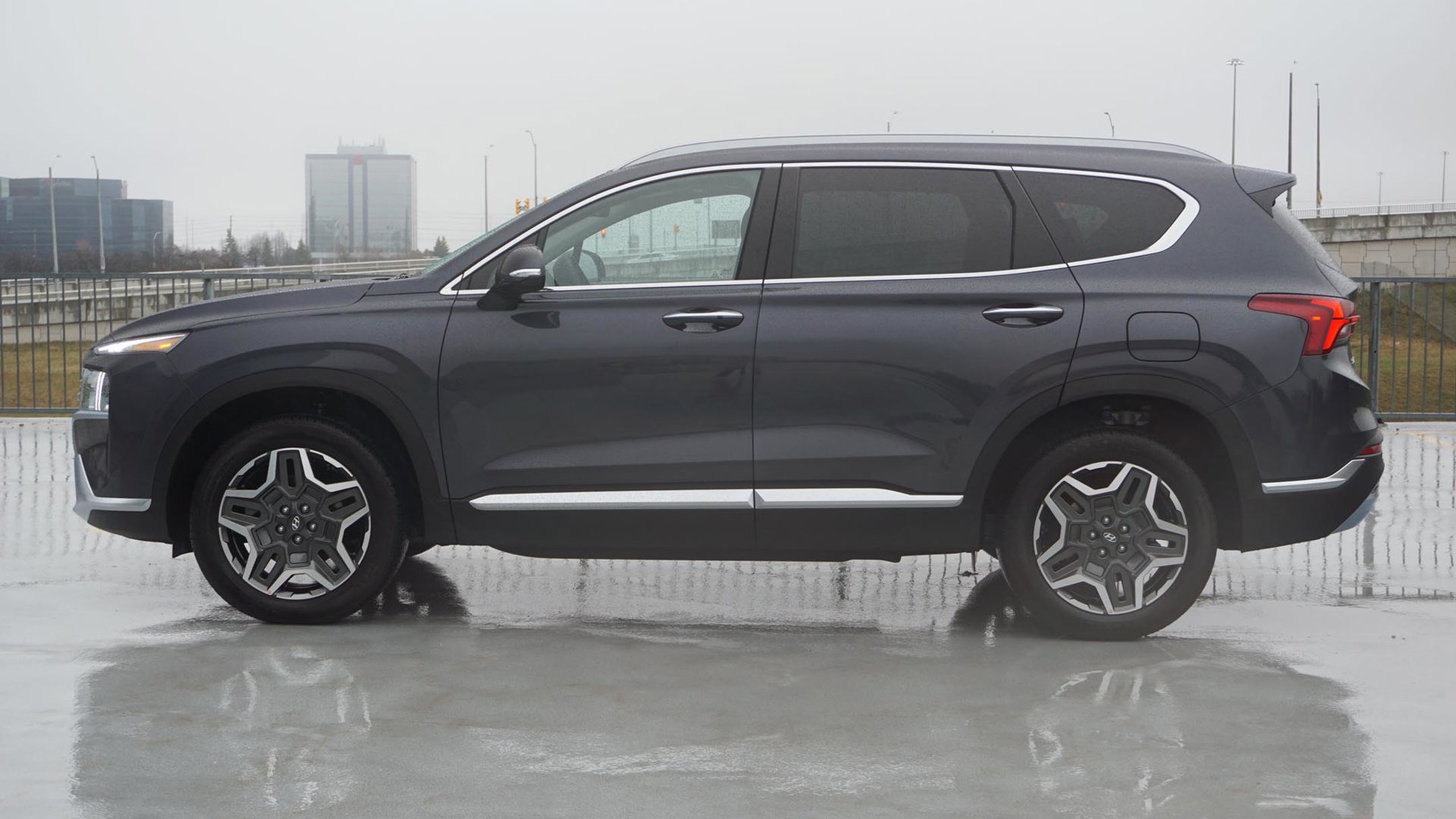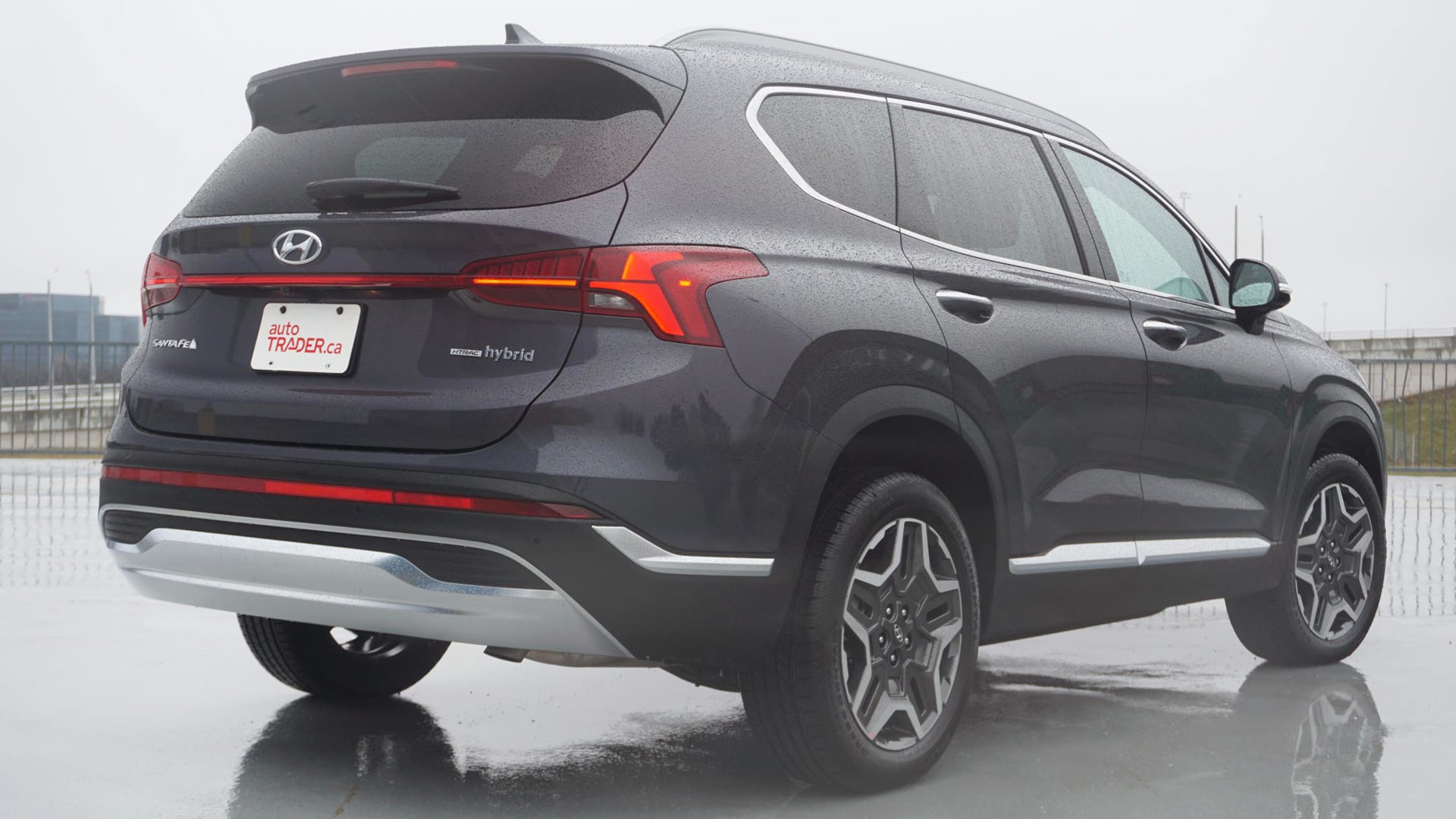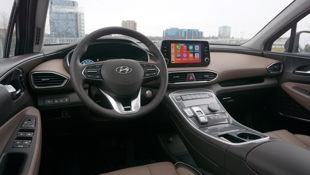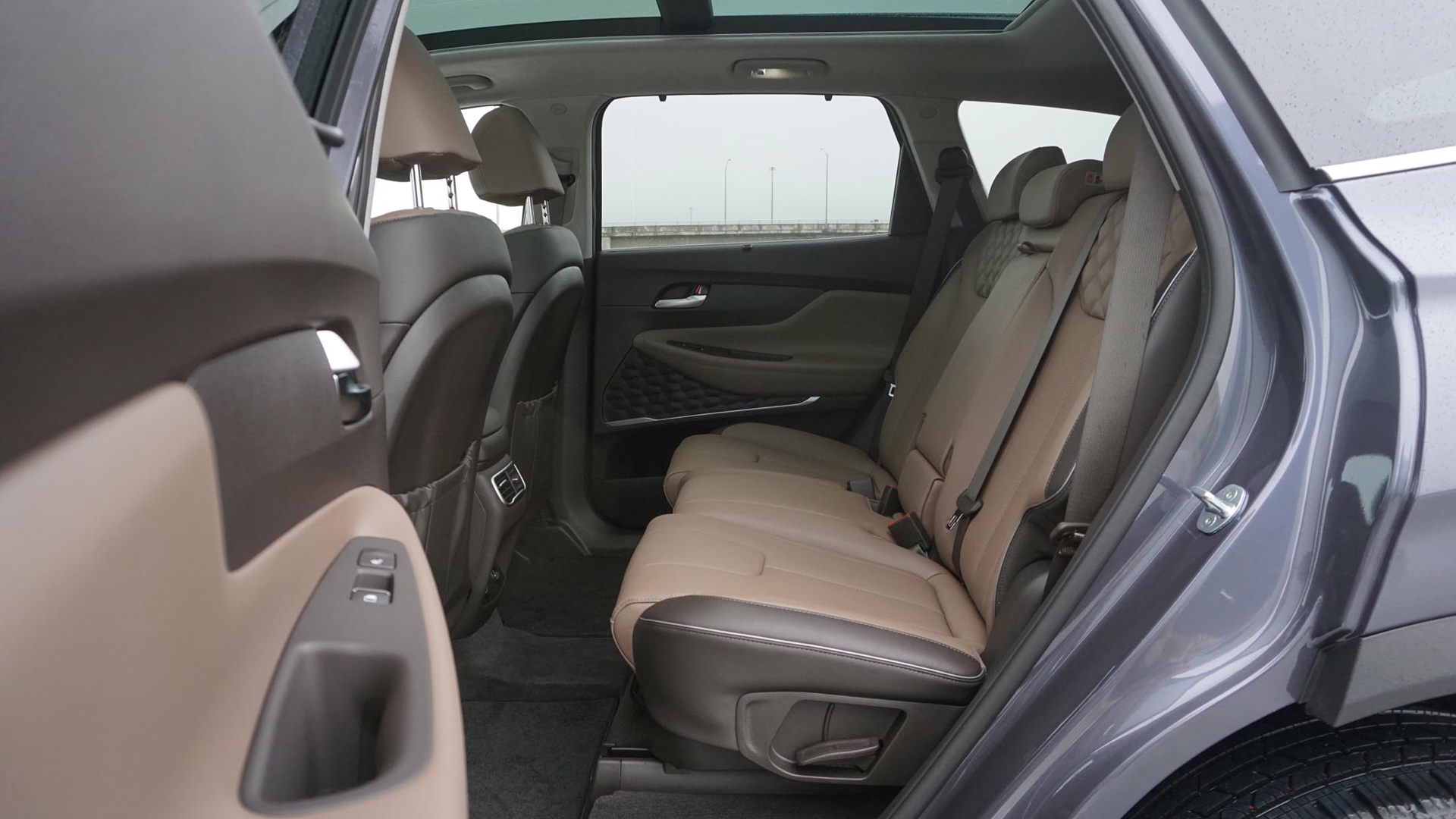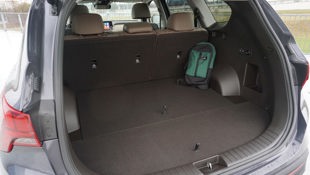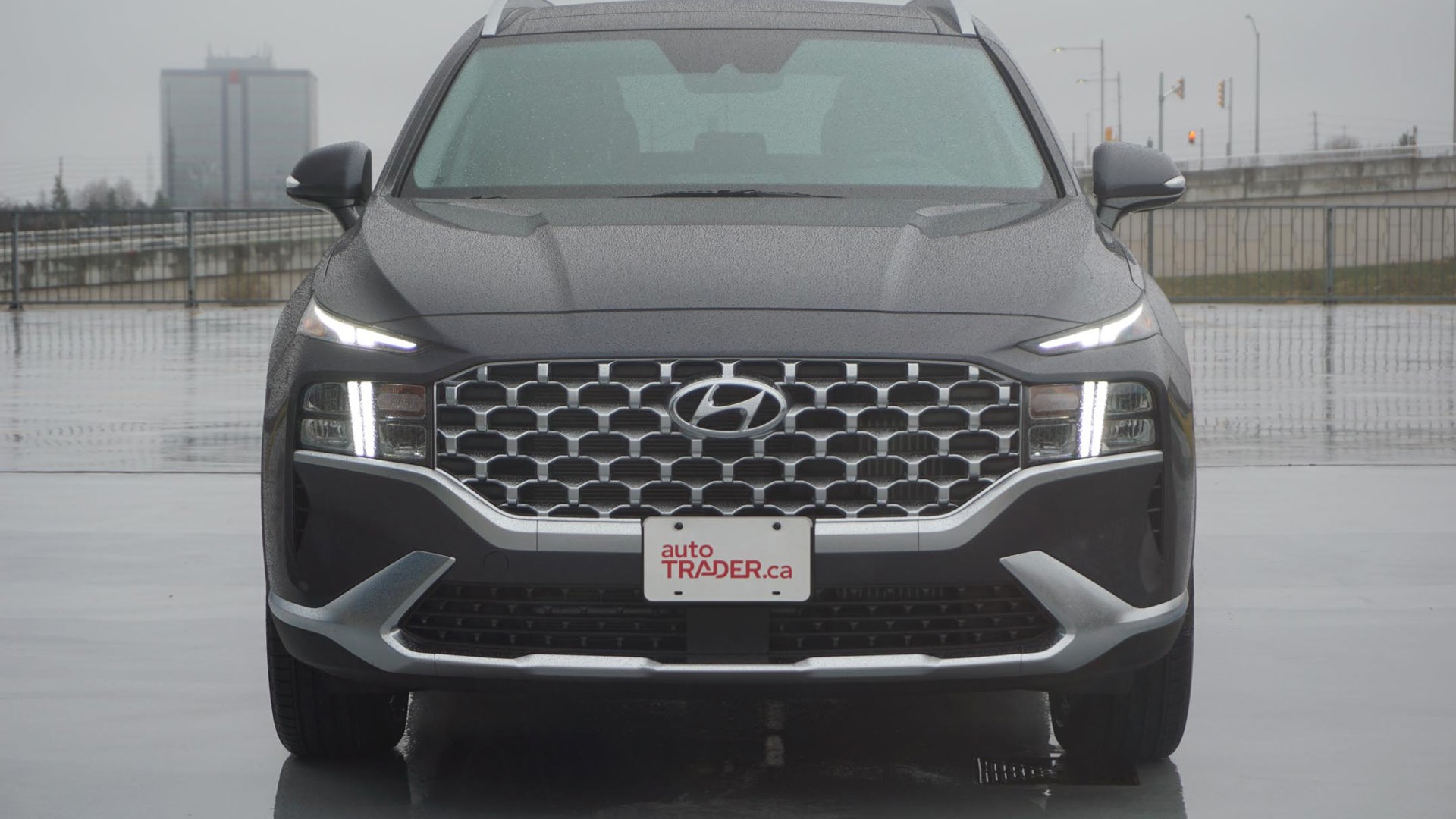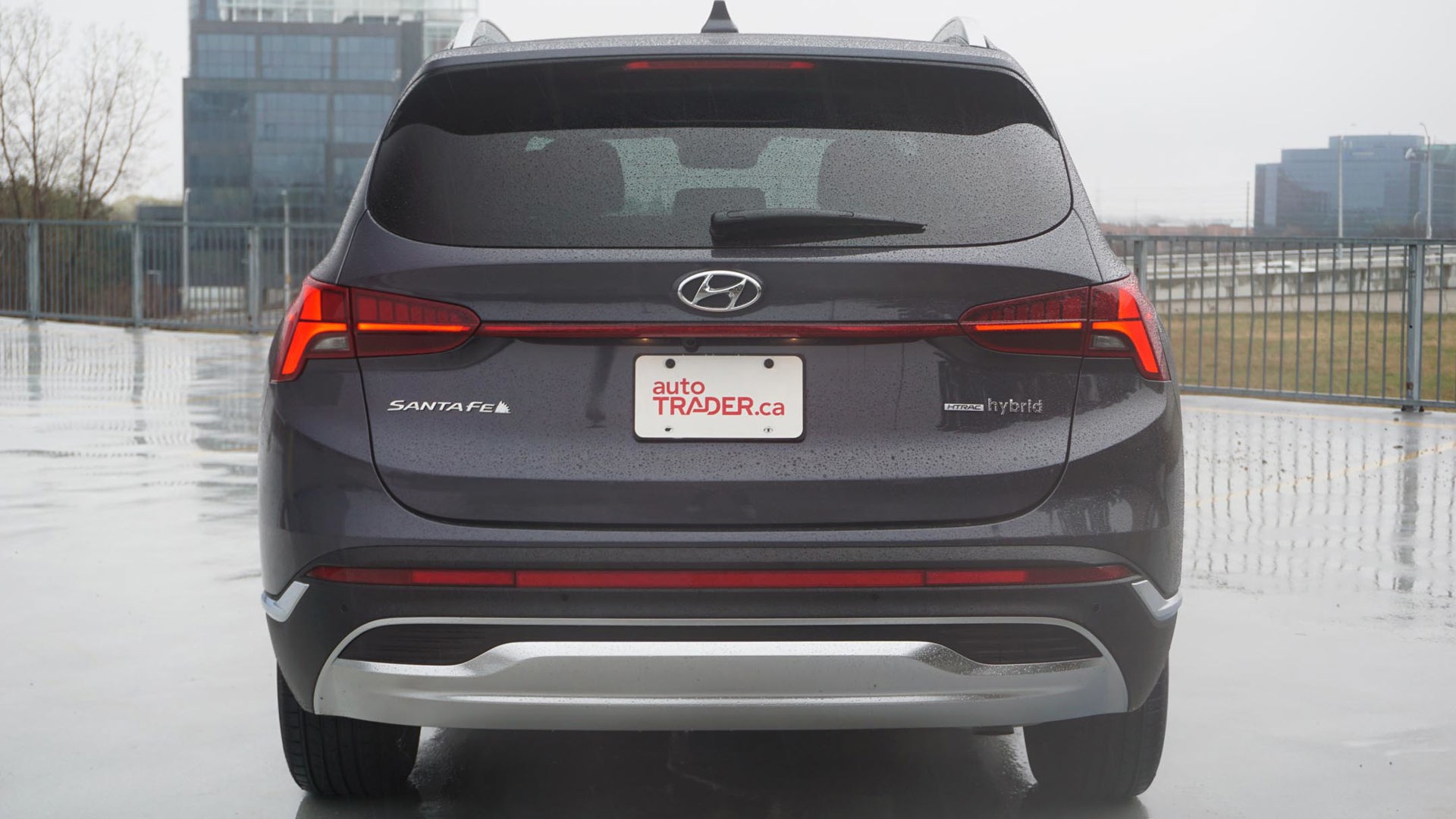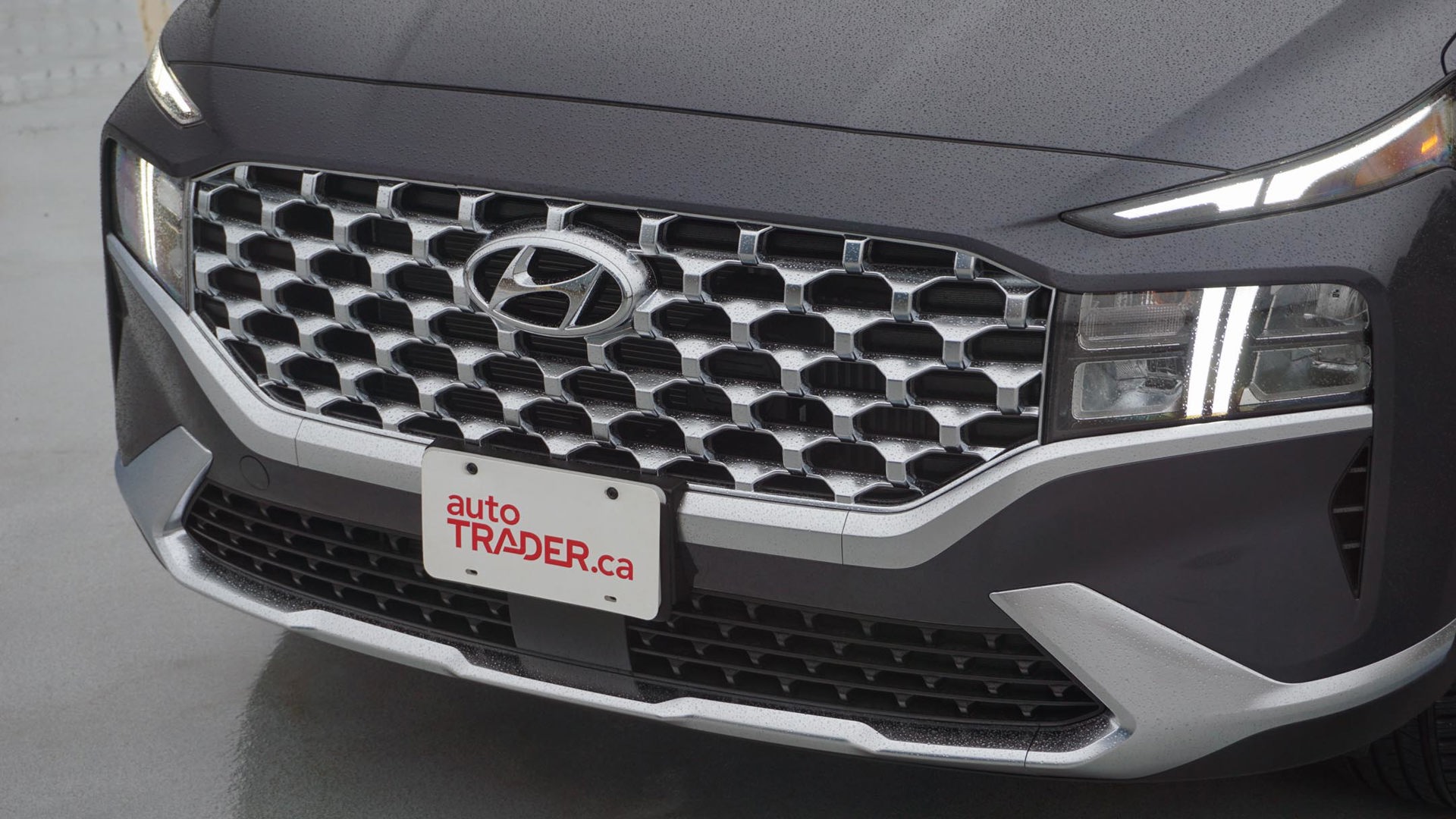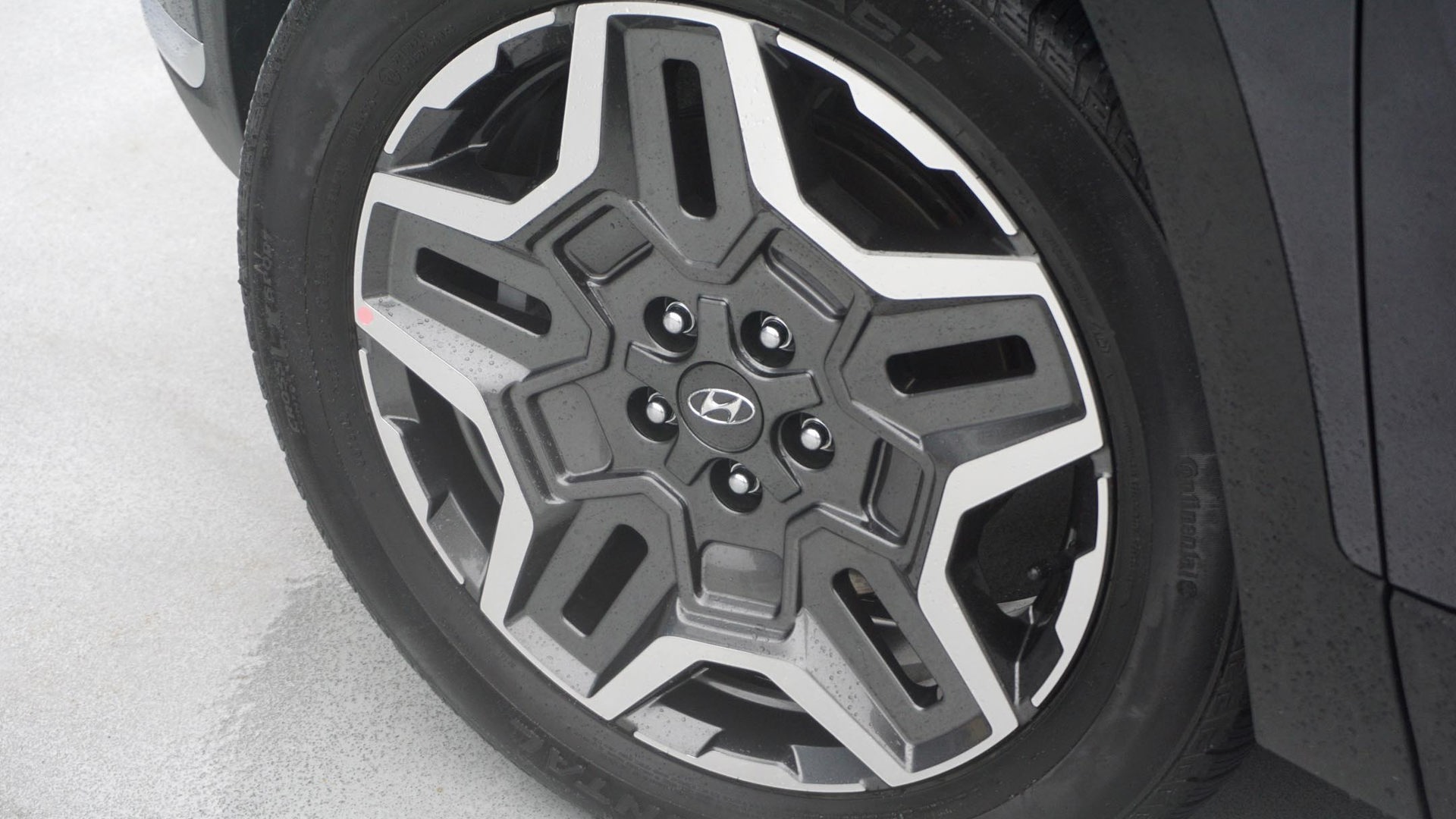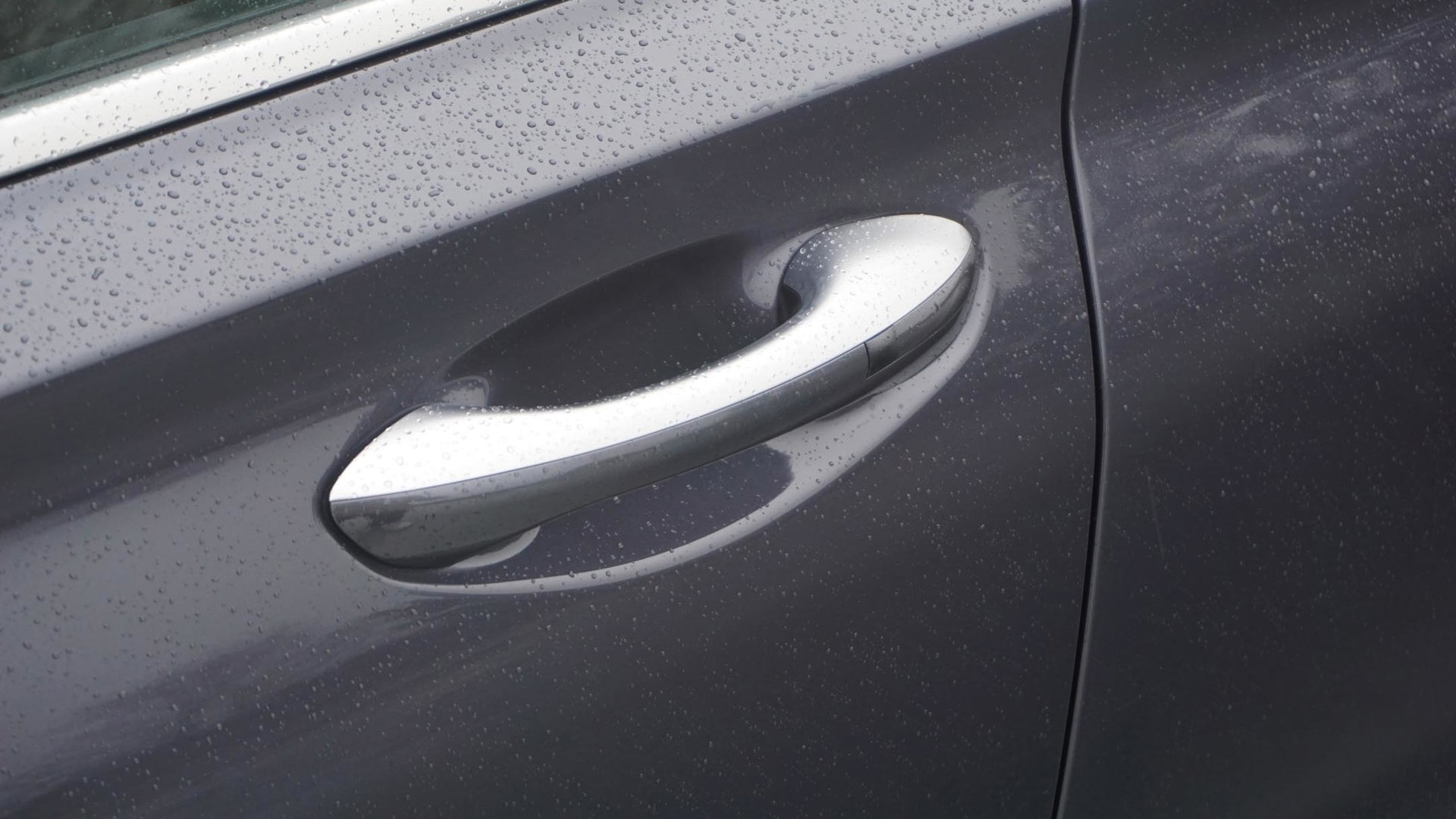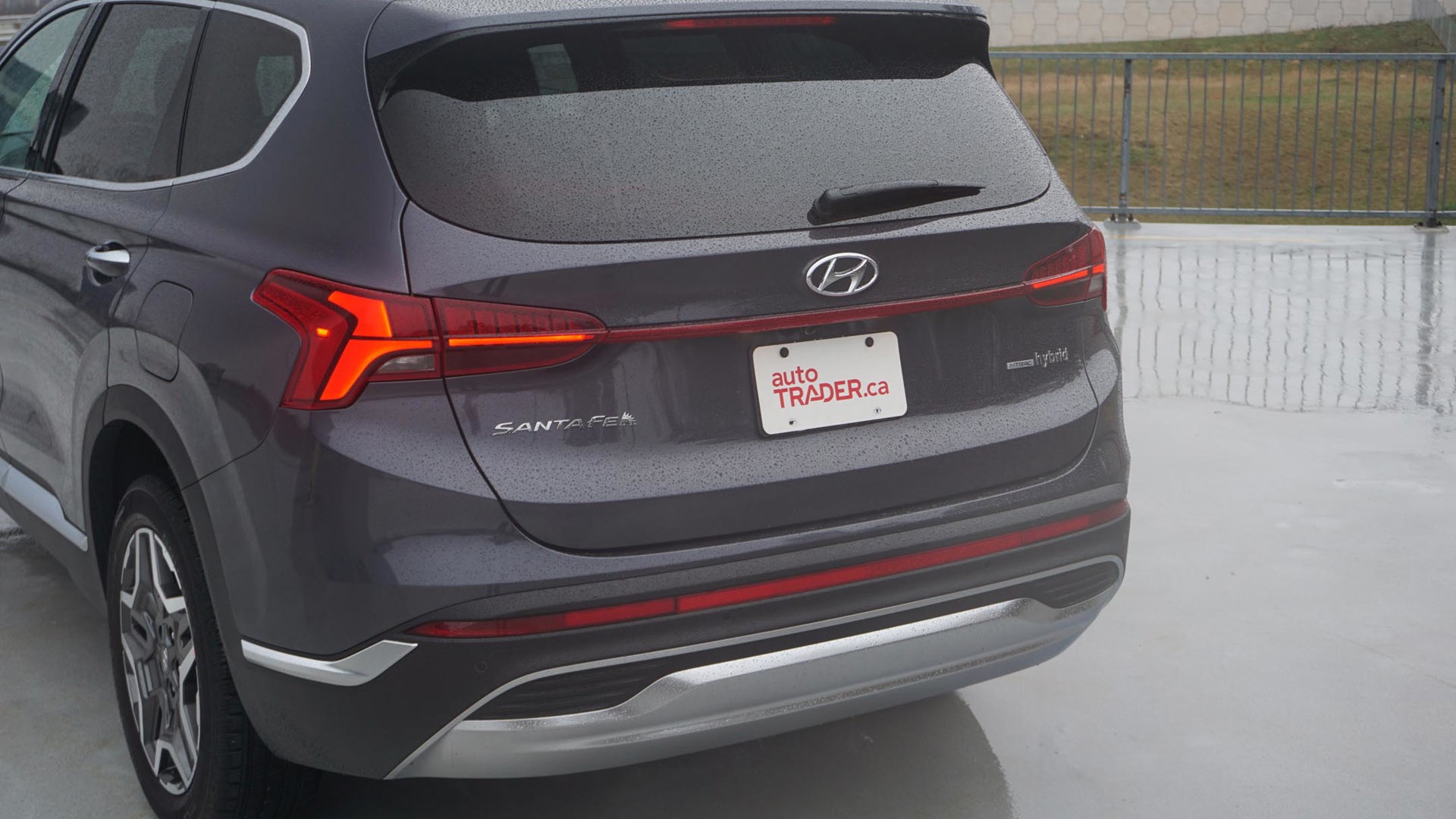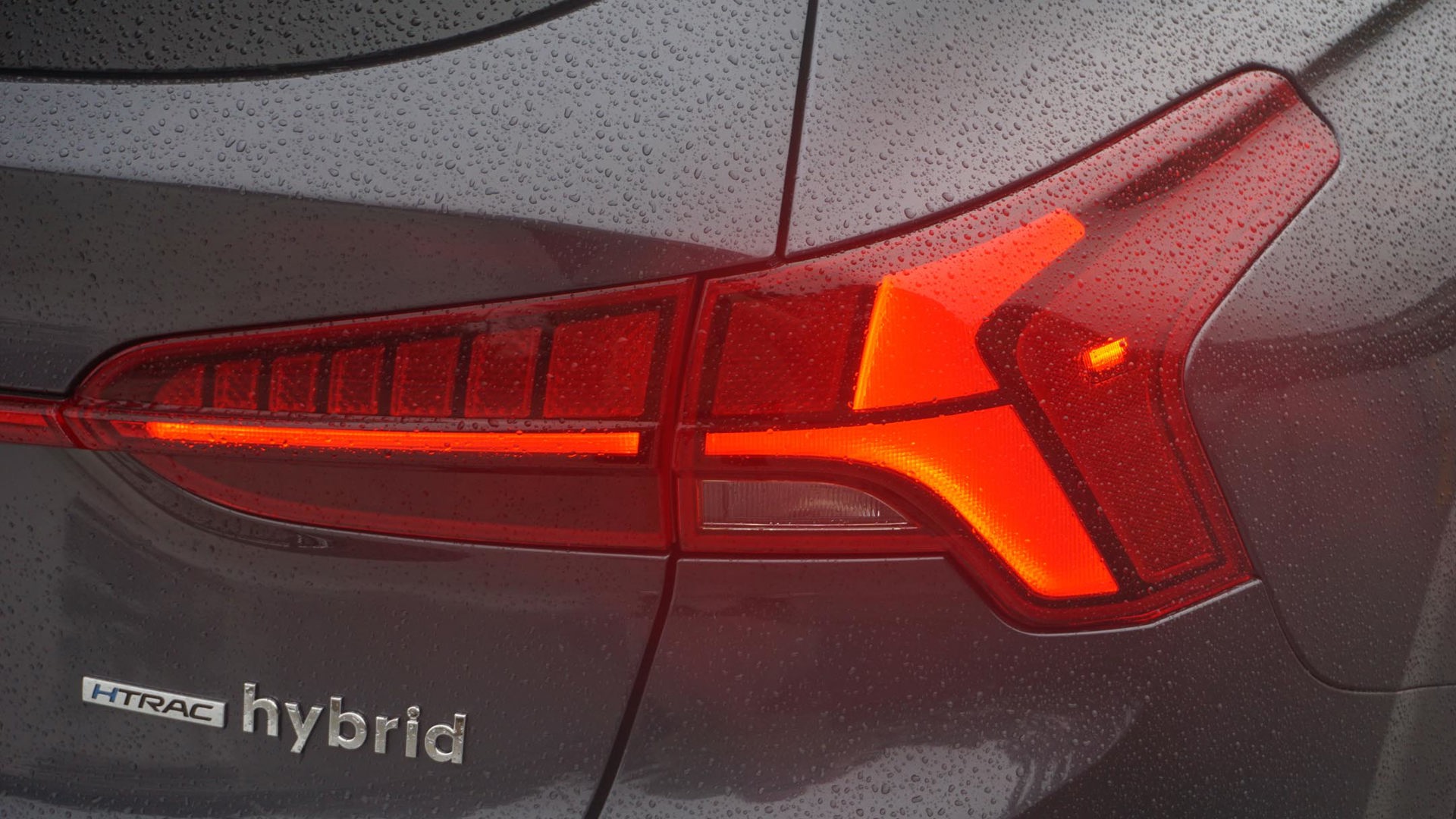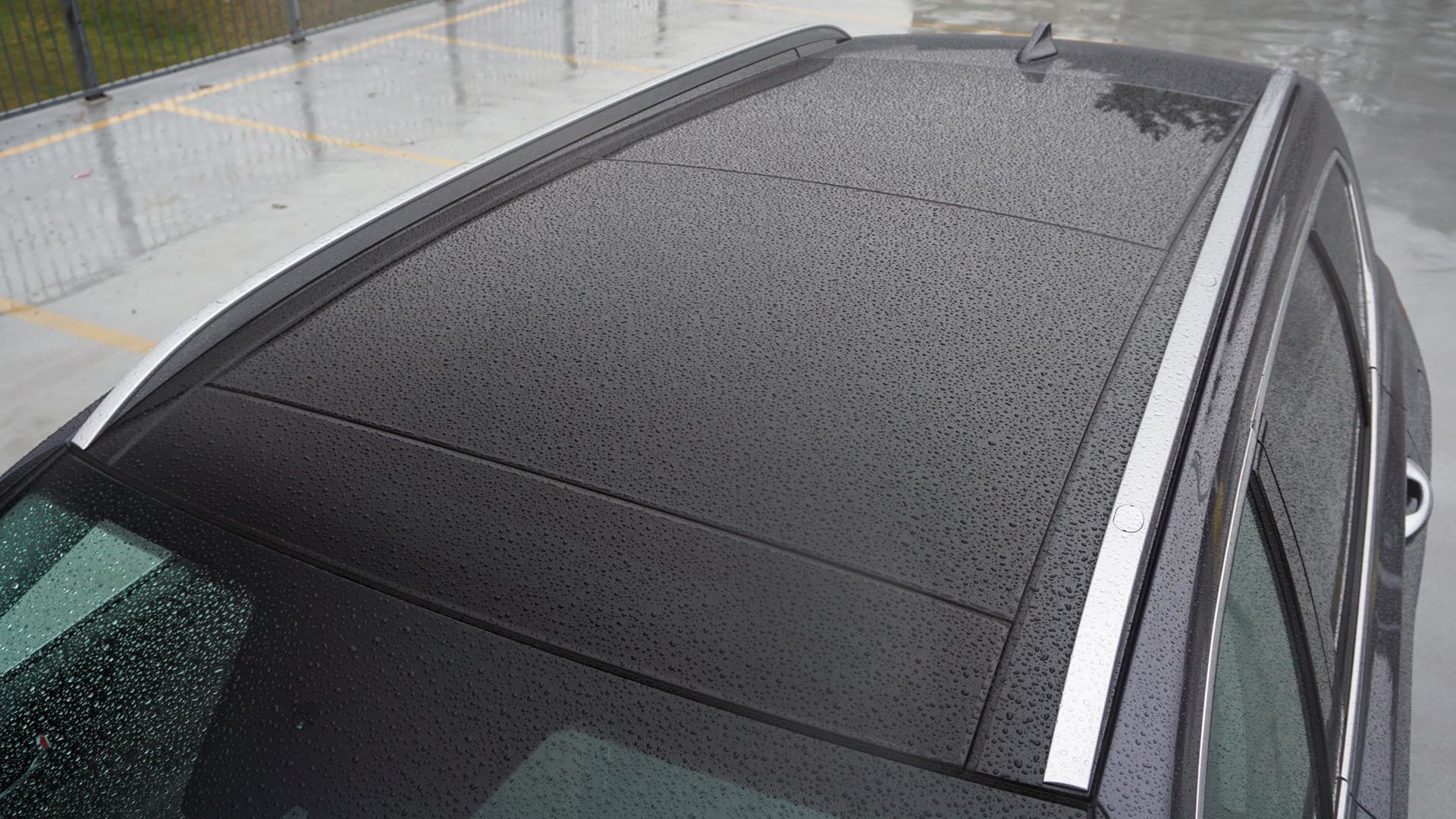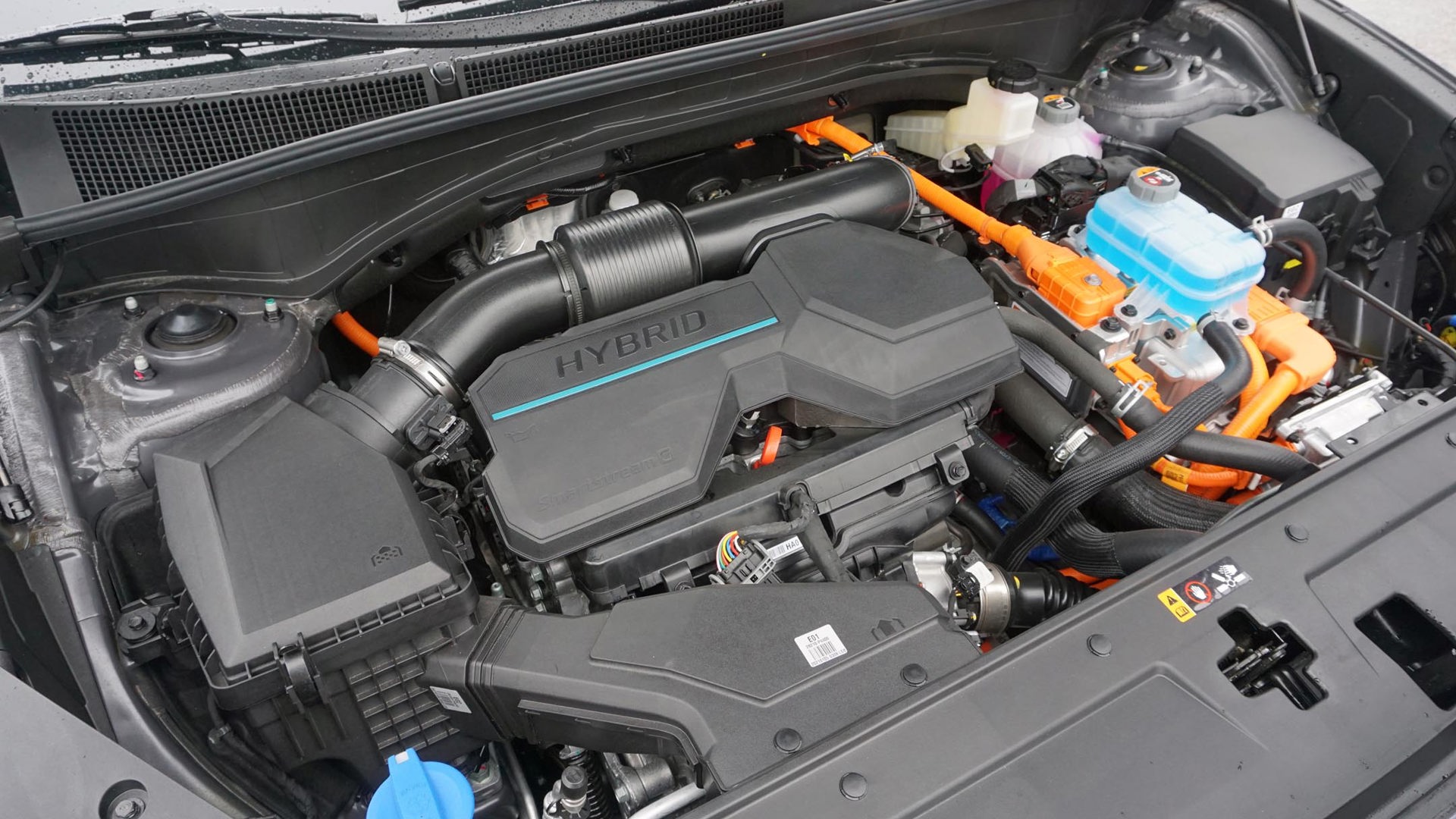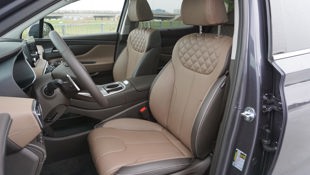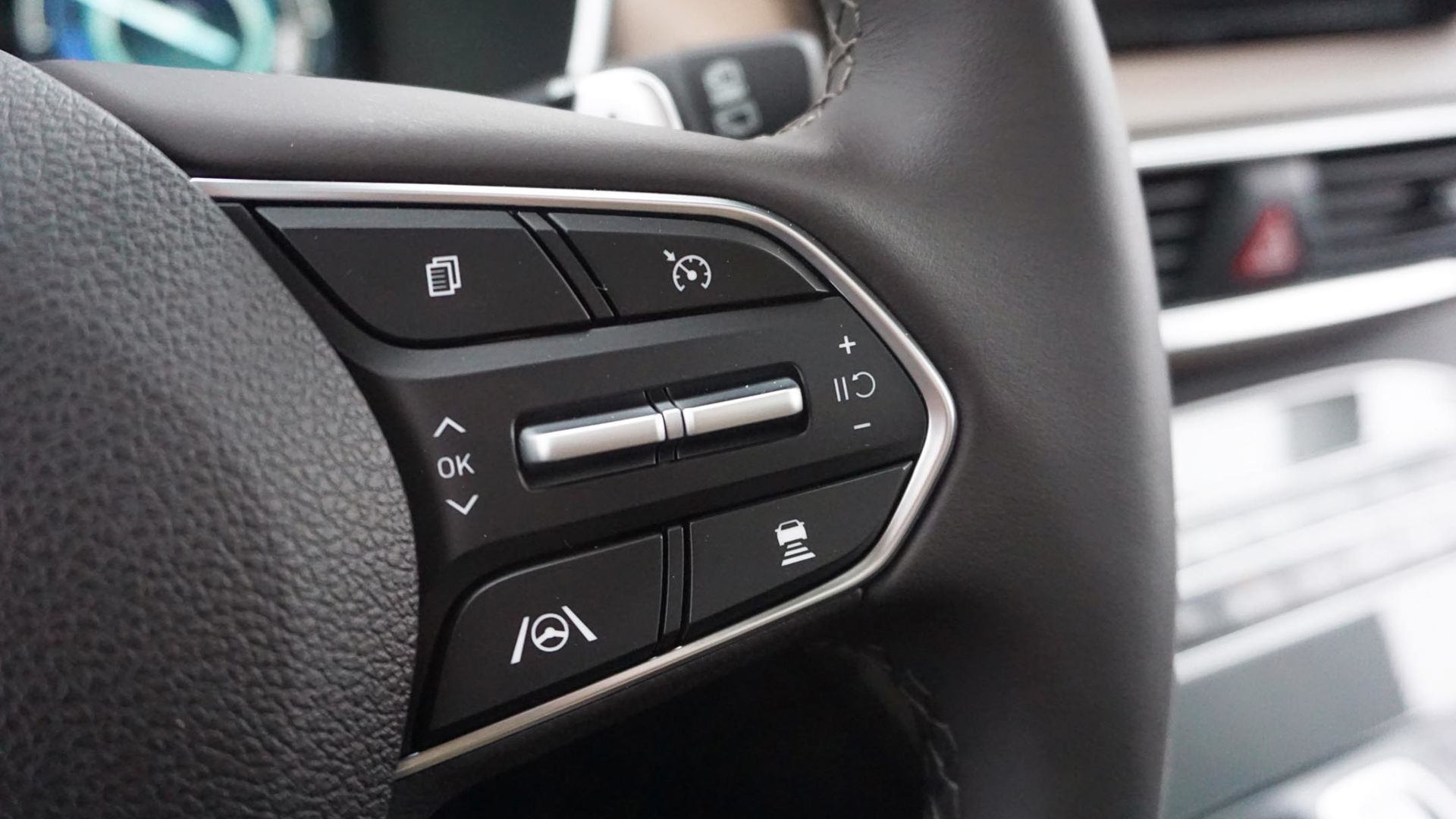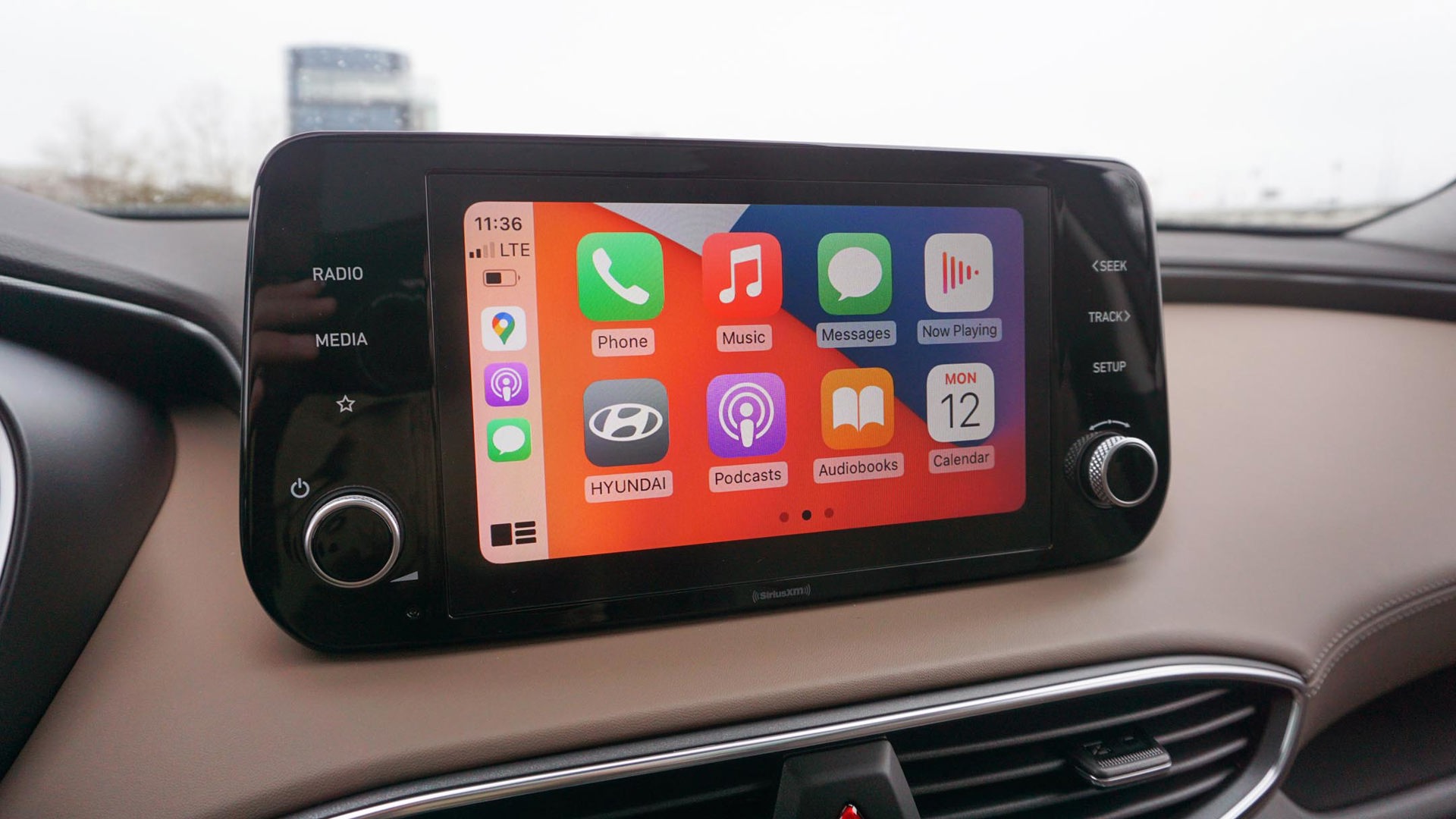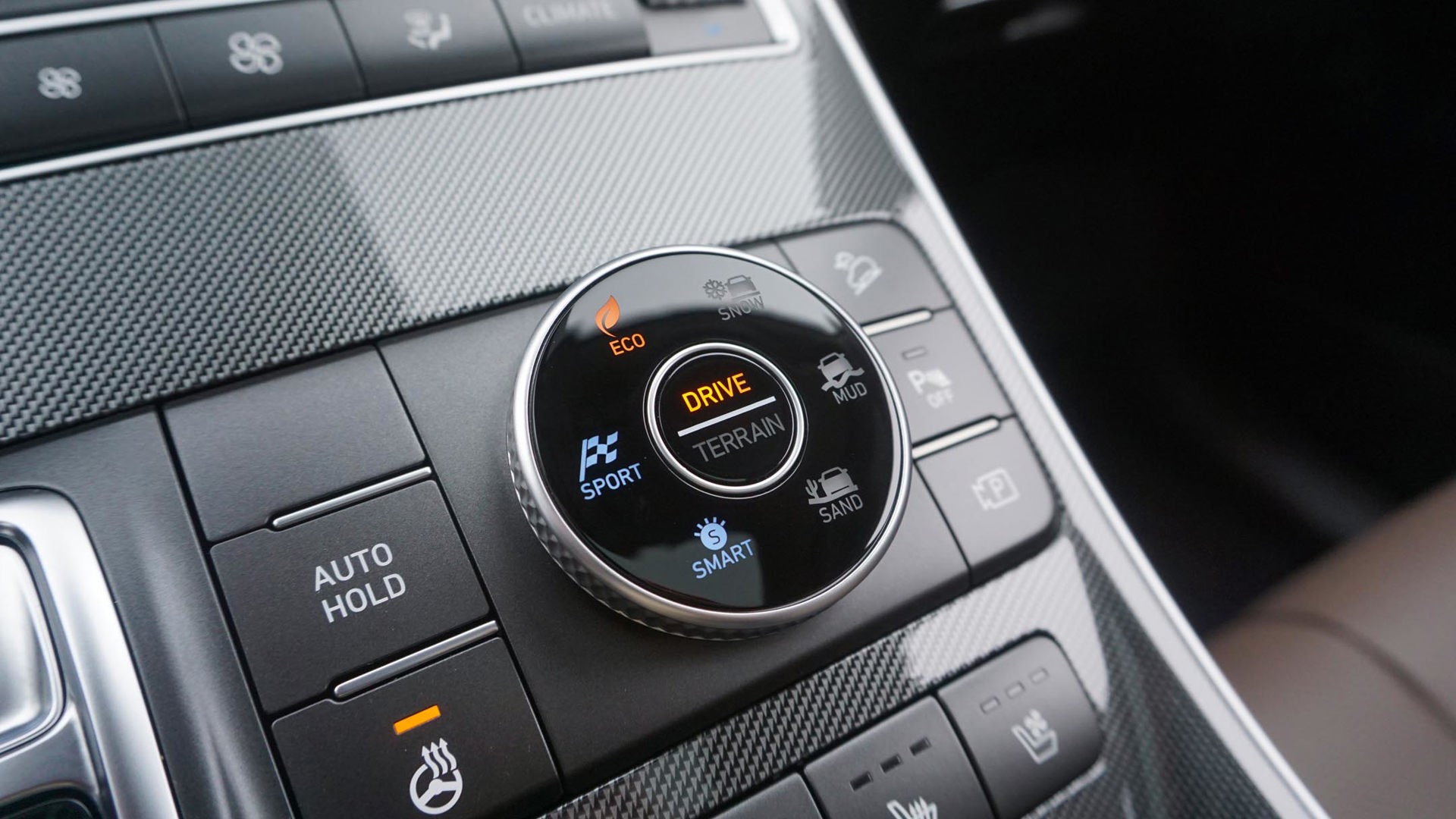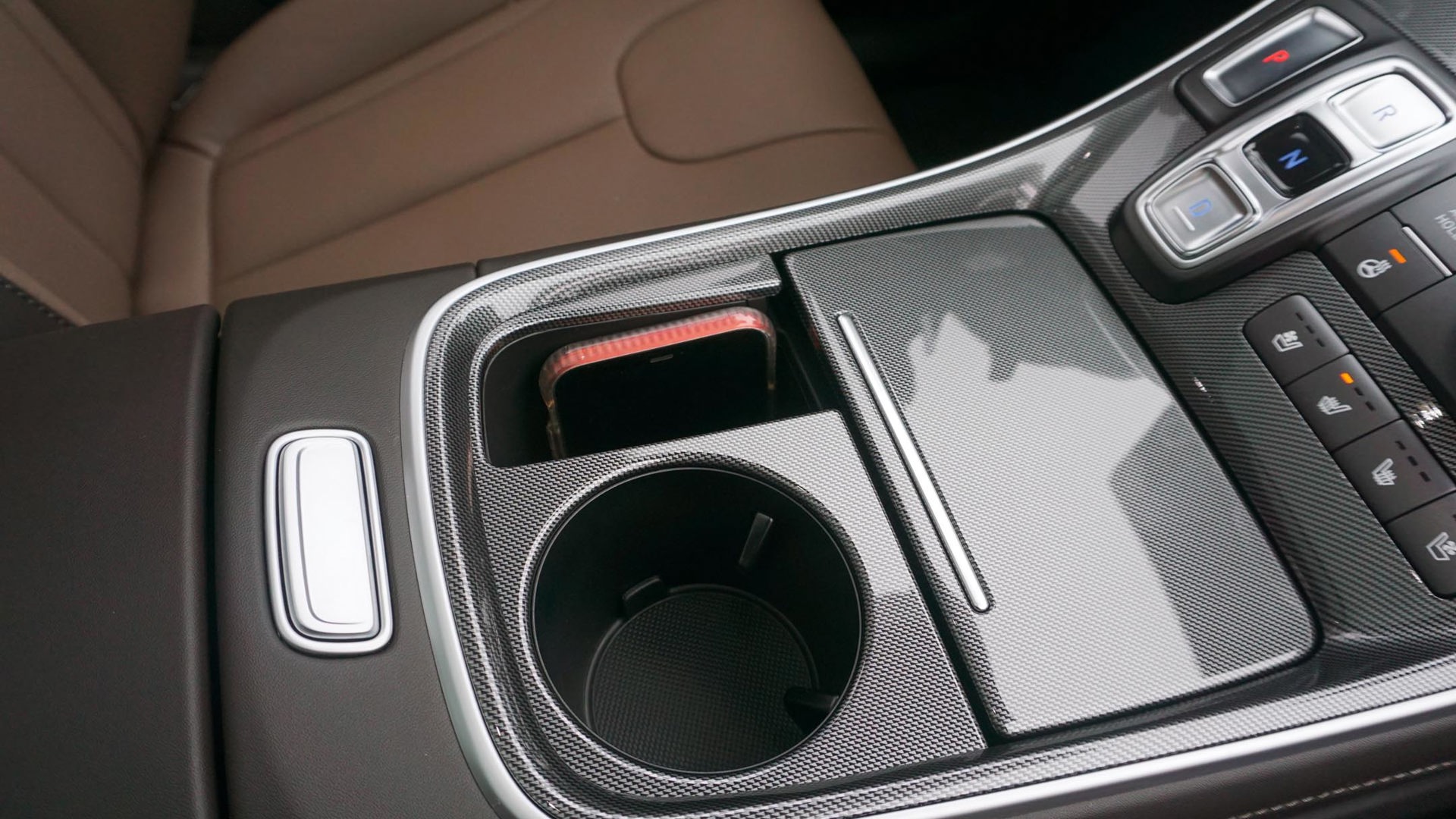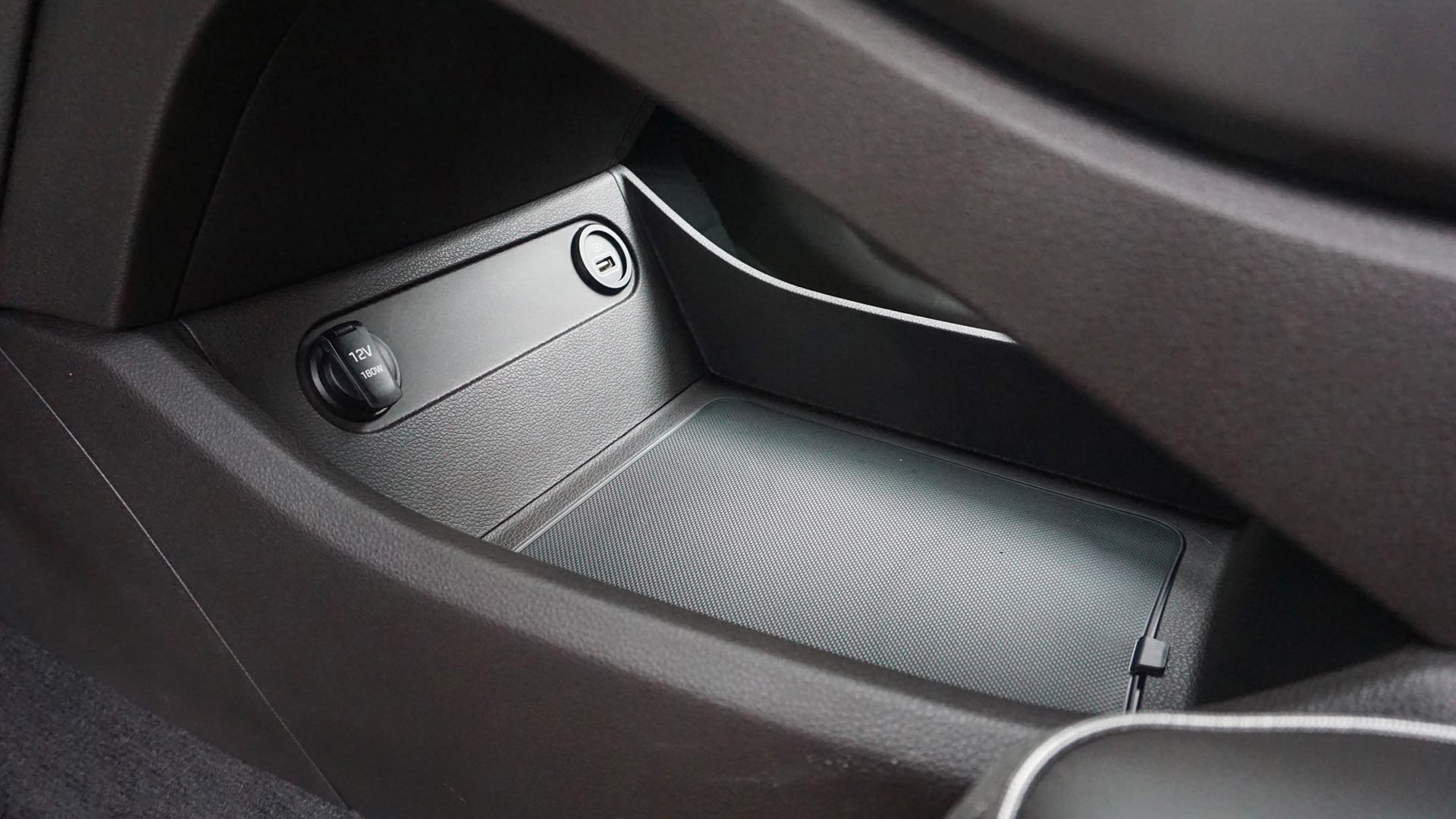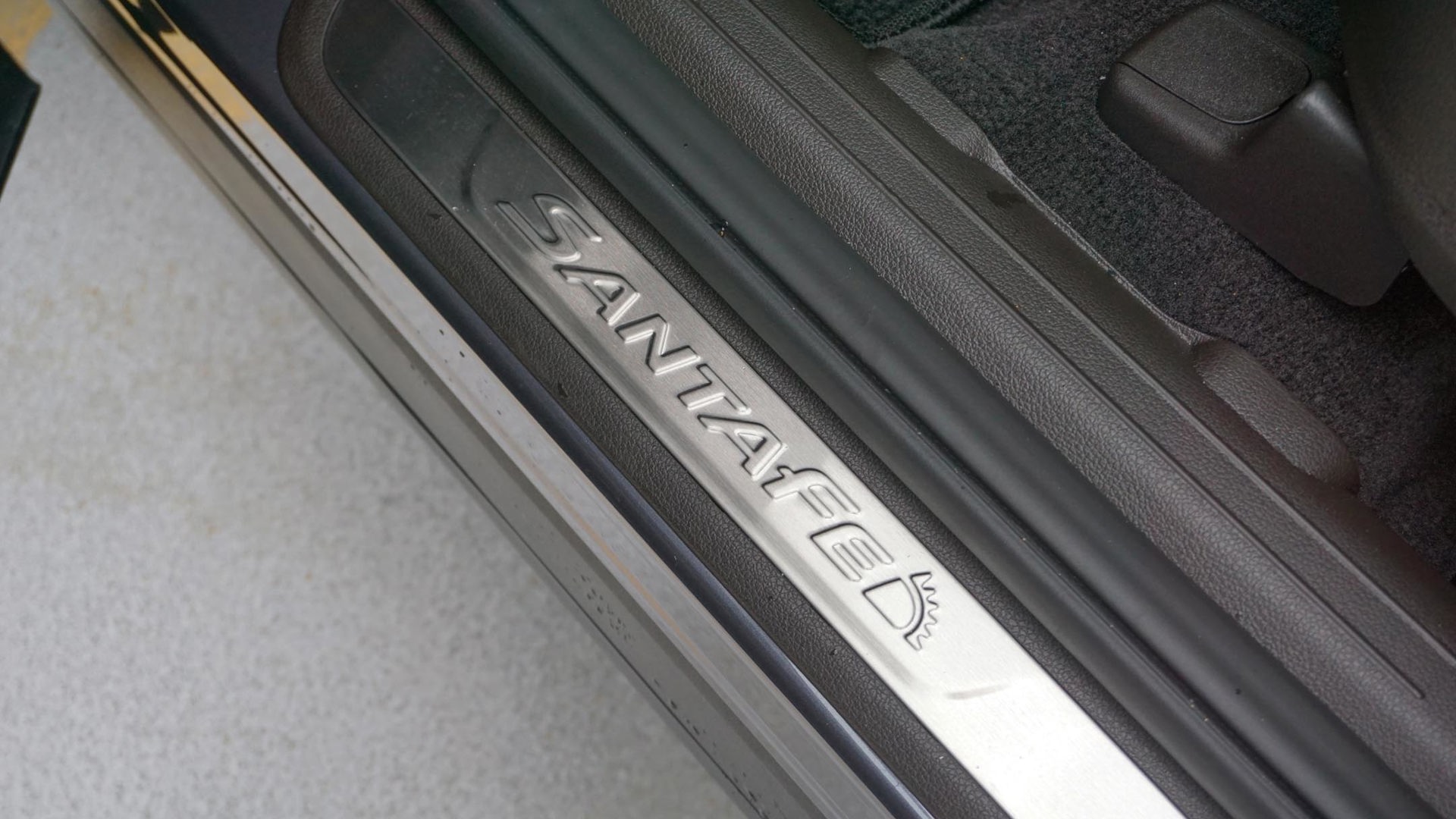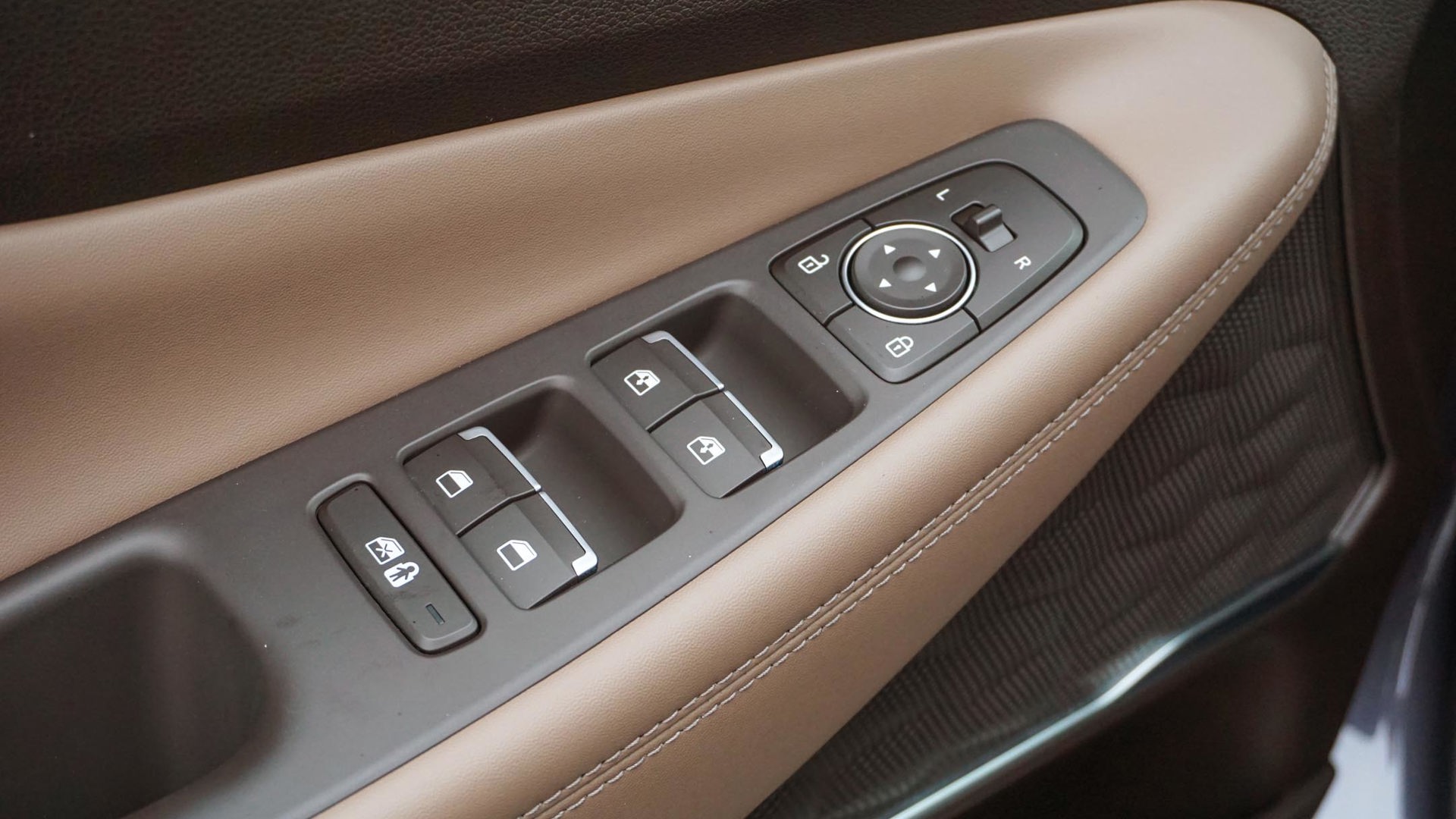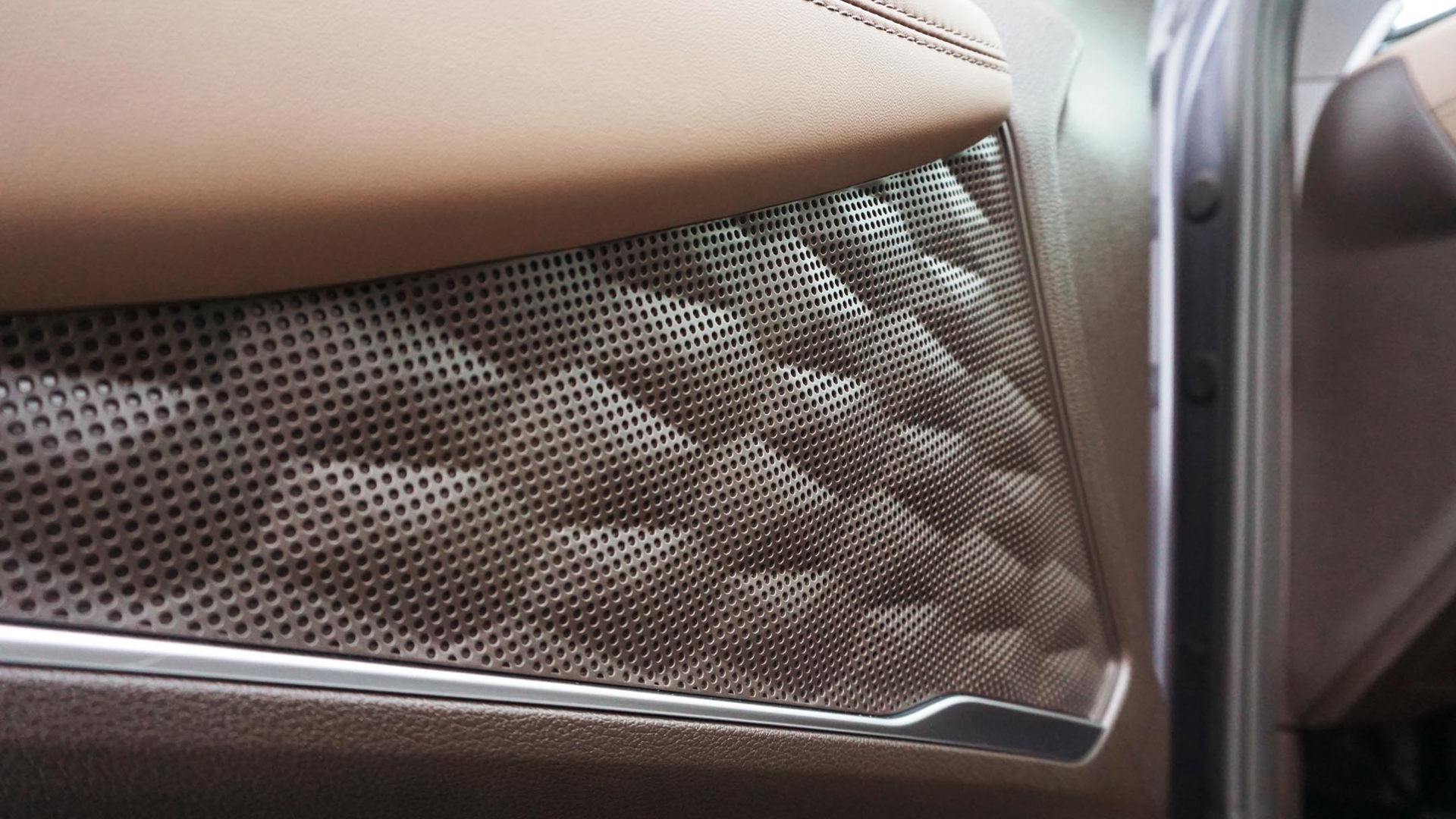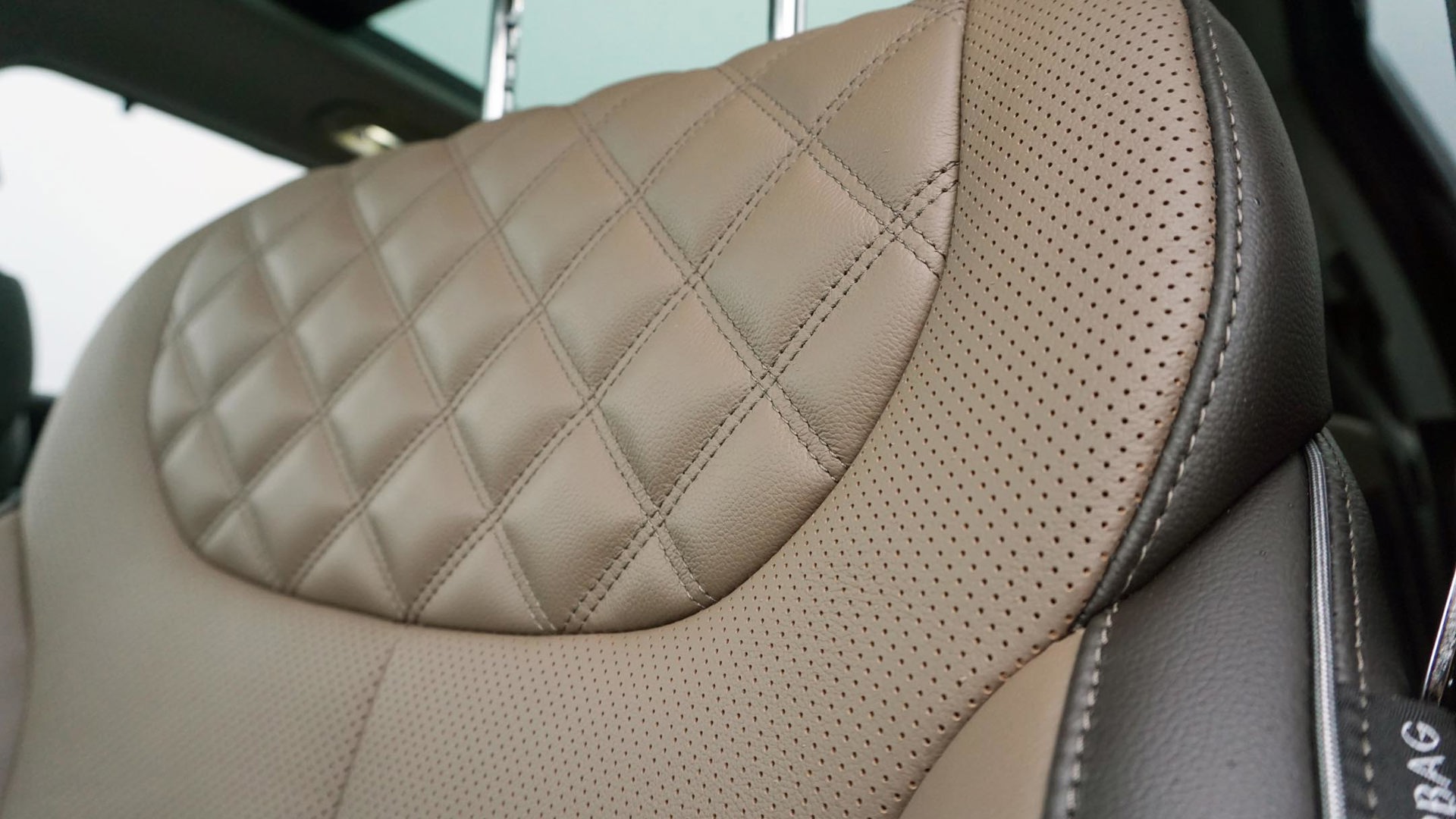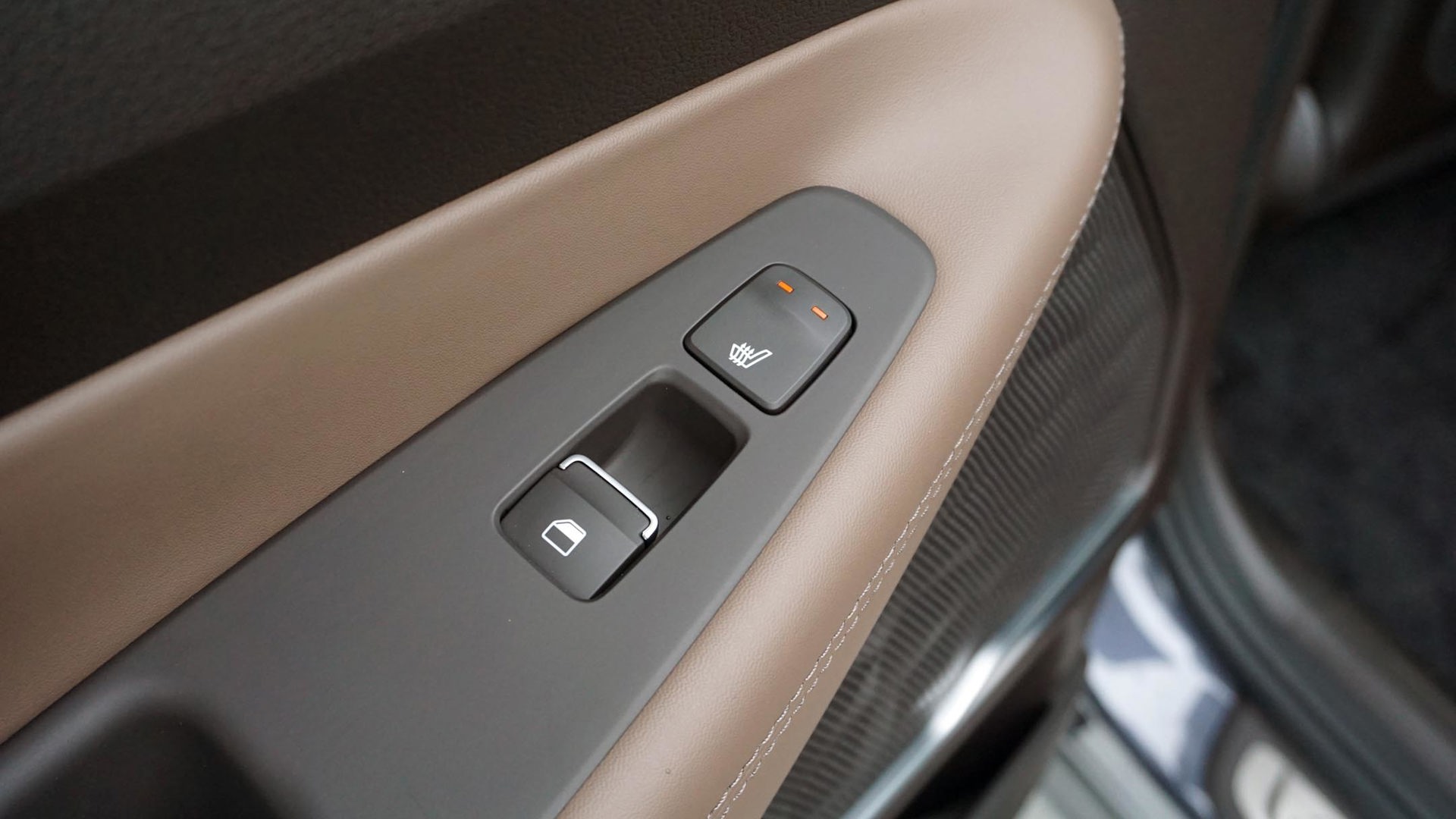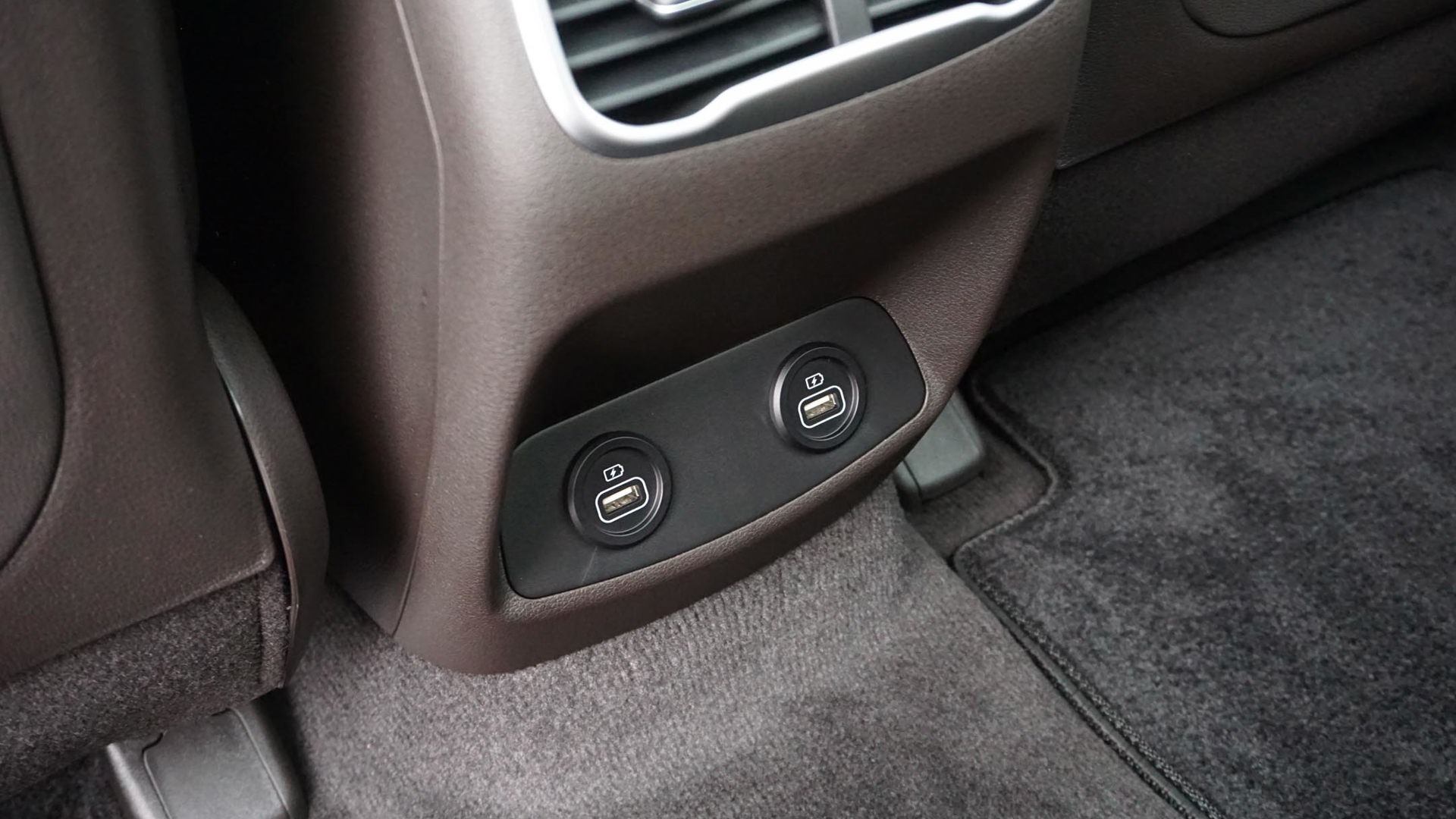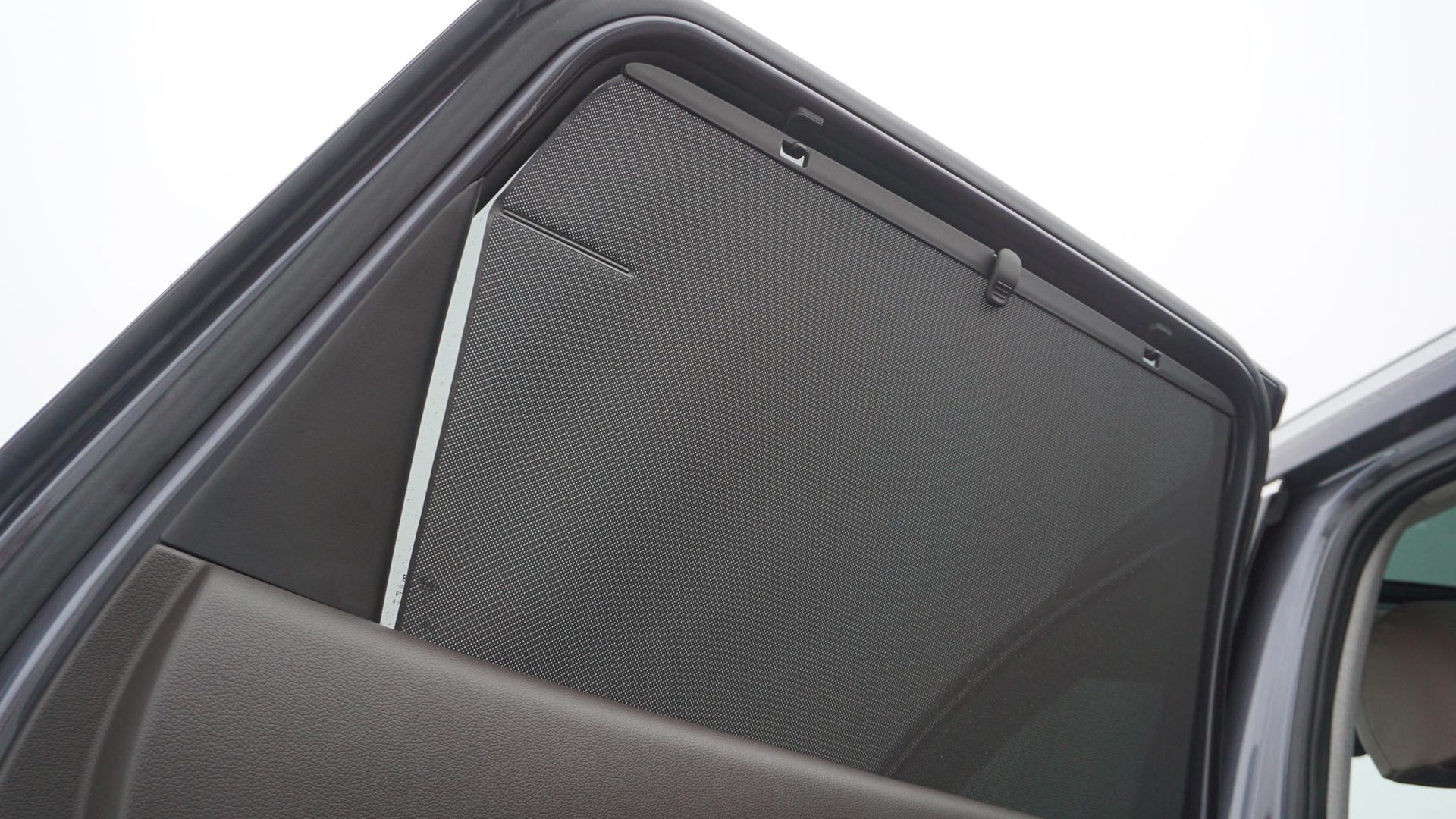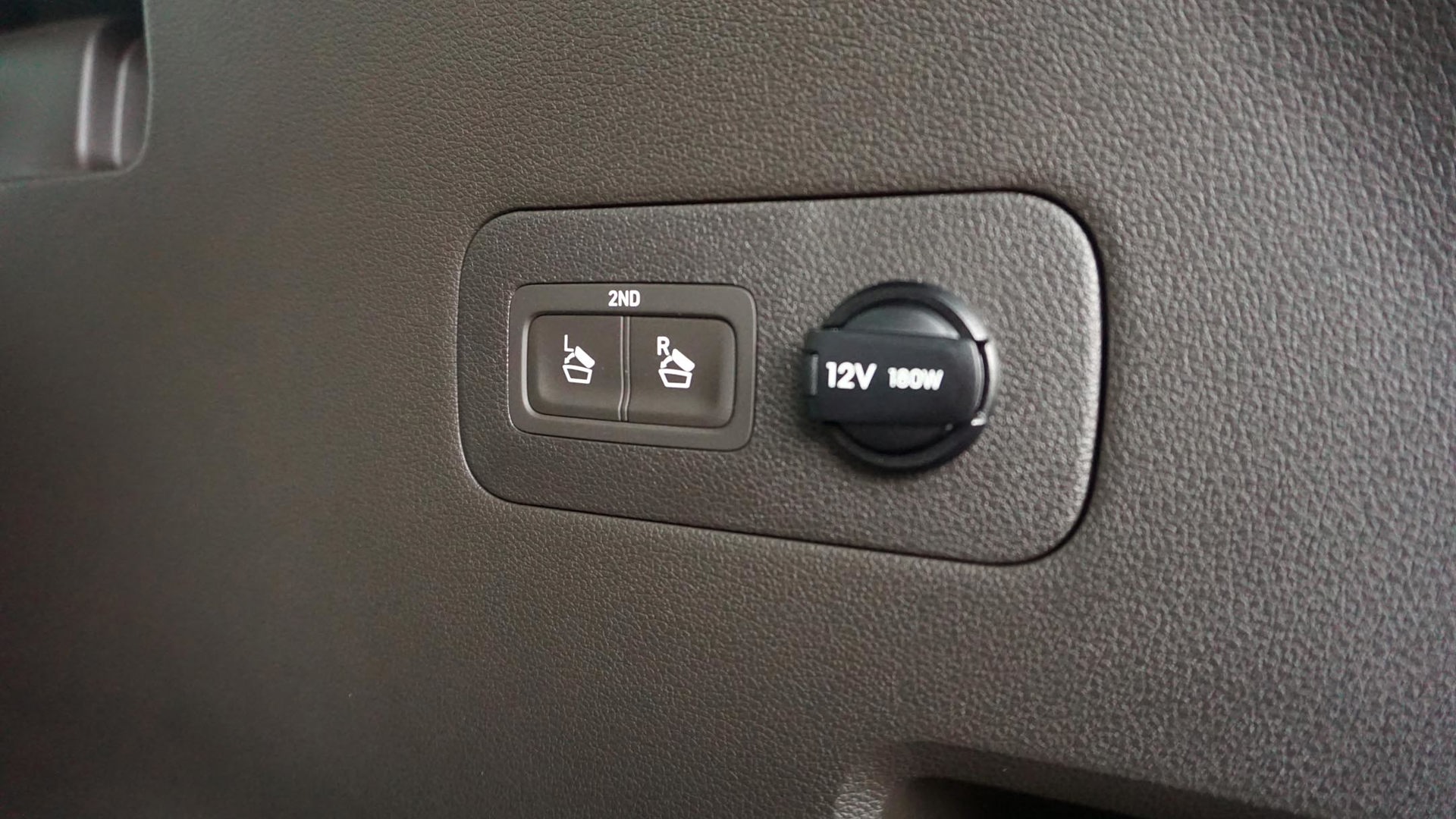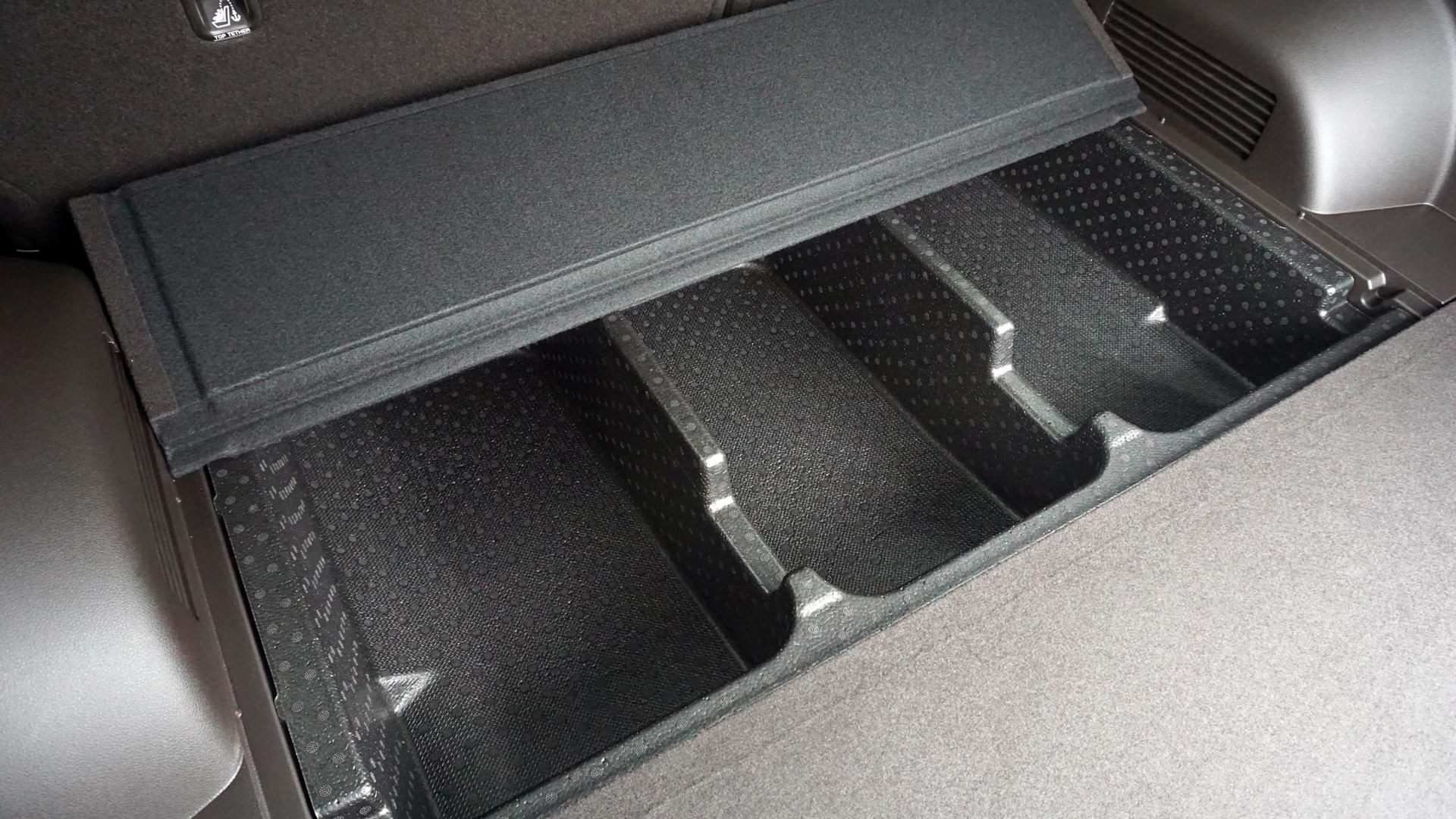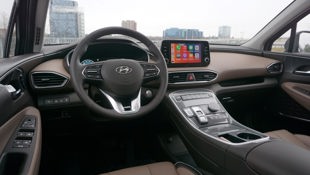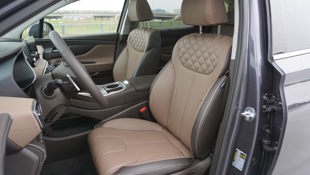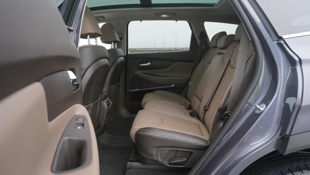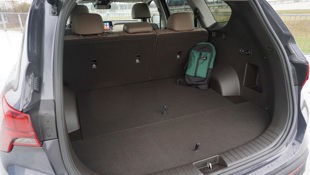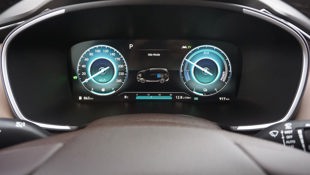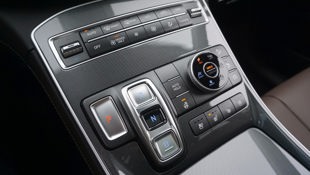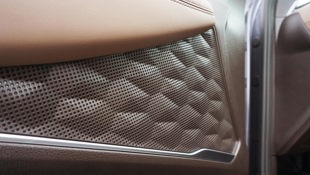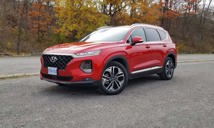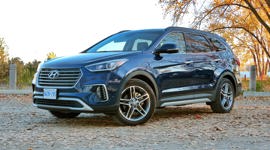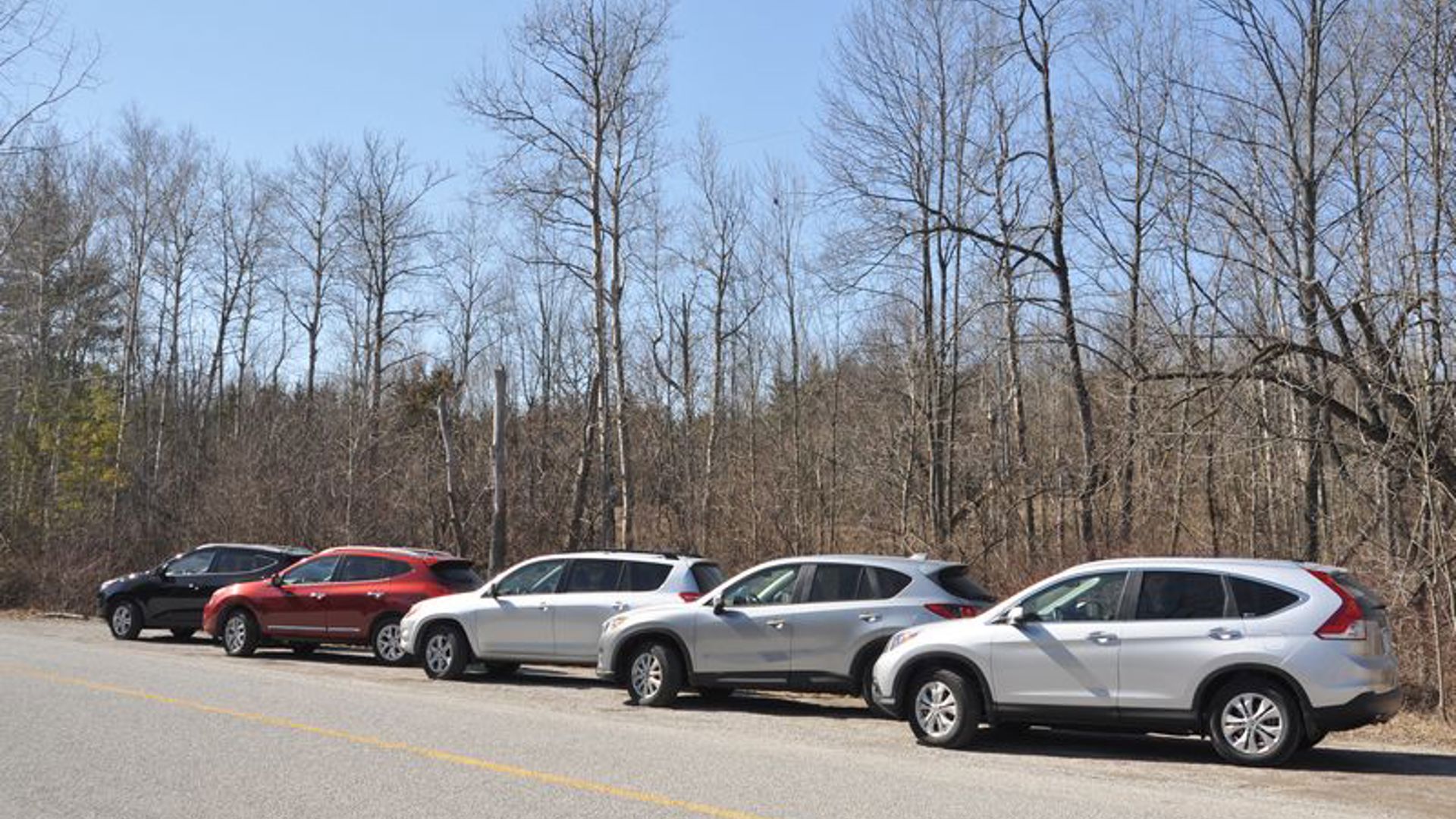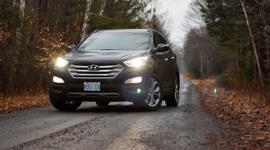 AutoTrader SCORE
AutoTrader SCORE
-
STYLING8/10
-
Safety9/10
-
PRACTICALITY9/10
-
USER-FRIENDLINESS9/10
-
FEATURES9/10
-
POWER10/10
-
COMFORT9/10
-
DRIVING FEEL10/10
-
FUEL ECONOMY8/10
-
VALUE7/10
It seems one of Hyundai’s most popular products is in the midst of something of an identity crisis.
After all, it was only a couple years ago that the Santa Fe underwent a complete overhaul, though it wasn’t especially well received – at least not according to the annual sales charts. So the automaker has done what it does best, with the 2021 version getting a few key tweaks in an attempt to turn heads.
And while the styling updates are noteworthy on their own, it’s the all-new 2021 Hyundai Santa Fe Hybrid that should earn some extra attention, with near imperceptible operation that leaves very few hints about its gas-electric underpinnings. In fact, it drives like any other SUV this size thanks to a unique combination of a turbocharged gas engine and traditional automatic transmission to go with its extra electrified goodies.
Power: 10/10
While it’s typical for an automaker to pair a thermal-efficient four-cylinder – usually one running on the Atkinson cycle – with a continuously variable transmission (CVT) in a hybrid like this, Hyundai has gone with a far more conventional setup. Utilizing the brand’s small-but-stout 1.6L turbo and a six-speed automatic transmission, as well as standard all-wheel drive, this powertrain behaves like a regular gas-powered sport utility and it’s better for it.
That four-cylinder makes 178 hp and 195 lb-ft of torque on its own – not a ton by modern standards, but more than enough. More crucially, peak torque kicks in at just 1,500 rpm. That’s the stuff that makes it go, and working alongside the gear ratios of the automatic transmission, this Santa Fe accelerates with little indication that there’s an extra dose of electrons on board. All together, net system output stands at 226 hp and 258 lb-ft of torque.
Driving Feel: 10/10
With that 44-kW electric motor under the hood, acceleration starts in pure silence just like any other hybrid before the gas engine kicks in. But even when it does, the 1.6L barely stirs before taking over driving duty. And since it uses a six-speed automatic instead of a CVT, this Santa Fe never strains itself to pull off a pass or accelerate from a stop the way rivals like the Toyota Venza or RAV4 Hybrid do.
Even more than the gas-electric version of the Ford Explorer, the Santa Fe Hybrid operates with little indication that it’s anything but a conventionally powered SUV. There’s even a surprising level of agility and responsiveness here. Though slightly larger than the average entry in the segment, this easily counts among the most enjoyably alert sport utilities of its kind to drive. Even the regenerative brakes are just right, with progressive pedal feel rather than the softness that’s typical to this class.
Fuel Economy: 8/10
That’s all the good news. What’s considerably less so is the amount of fuel the Santa Fe Hybrid consumes. Granted, it’s superior to a gas-only version of this same sport utility by about 2.5 L/100 km, and that adds up quickly. But next to those Toyota twins, or the segment-leading Ford Escape Hybrid, it’s simply not as efficient.
Officially, it’s rated to consume 7.1 L/100 km in the city and 7.9 on the highway for a combined average of 7.4 L/100 km. And achieving those numbers proved easy, with an initial 200-km evaluation drive coming in at 7.3 L/100 km. However, all three of those rivals are substantially better, with combined ratings ranging from 5.8 to 6.1 L/100 km.
Value: 7/10
The Santa Fe Hybrid is also more expensive than both the Escape and RAV4 hybrids, with a starting price of $43,324 before tax including a $1,925 freight fee. The cheapest Escape Hybrid in a front-wheel-drive configuration starts at $34,649, while the all-wheel-drive RAV4 Hybrid starts at $34,810. The most expensive Santa Fe Hybrid, meanwhile, is priced at $45,724 – much closer to the loaded Escape Titanium Hybrid with all the options, and just about in between the top-of-the-line versions of the RAV4 Hybrid and Venza.
Practicality: 9/10
That’s an unenviable position for the Santa Fe Hybrid to be in, but it delivers lots to like as far as family haulers are concerned. Its slight size advantage over the average small SUV pays big dividends inside, with an impressively spacious second row and generous cargo confines. Beyond the clever cubbies beneath the floor to tuck small items, there’s 1,032 L behind the back seats and 2,041 L with them folded. Both of those numbers put the Santa Fe at the top of the segment alongside the RAV4 and Honda CR-V.
Just like the Escape, the second-row seats can slide fore and aft for more utility or passenger space, respectively, with the 1,035 mm (40.7 in) of legroom providing plenty of flexibility to extend the cargo area without reducing the accommodations for people. Should more room be needed, either half of the 60/40-split folding rear seats can be stowed from the cargo area via quick-release buttons that come standard in the top trim.
User Friendliness: 9/10
In the front half of the cabin, there’s plenty of small-item storage, although the door pockets are on the small side – an increasingly common problem for vehicles in the Hyundai Group portfolio. However, the covered console bin is generously sized, while a vertical phone slot complete with a wireless charger in the top Luxury Hybrid trim provides a convenient spot to stash the driver’s device.
There’s even a pass-through storage bin beneath the console afforded by the shift-by-wire system, though that comes at the cost of a new push-button gear selector on the centre stack. Otherwise, there’s a typically intuitive layout to the interior (this is a Hyundai product, after all), with big and boldly labelled buttons for just about everything. The climate and drive controls get particularly high marks this time around, with buttons like those found on a TV remote for those on in years and short of sight.
At eight inches, the touchscreen that handles infotainment duty is somewhat modestly sized, with this hybrid missing out on the gas-only Santa Fe’s 10.25-inch unit. It’s no matter, though, with a logical menu layout and good response to inputs. There’s also wireless Android Auto and Apple CarPlay connections that don’t come with that bigger screen, though the latter proved finicky during this truncated test, failing to recognize a device in the wireless charging slot prior to start-up.
Features: 9/10
At least for its first year, the Hyundai Santa Fe Hybrid remains relatively straightforward as far as packaging goes. It’s available in two trims – a powertrain upgrade for the Preferred trim or as the standalone Luxury Hybrid – and comes reasonably well equipped. Heated front seats are standard, as is a heated steering wheel, dual-zone automatic climate control, satellite radio, those wireless smartphone connections, rear-window sunshades, and a power tailgate.
The Preferred trim’s so-called Trend package adds an eight-way power-adjustable passenger seat to match the driver’s, as well as a panoramic sunroof, leather upholstery, and those quick-release buttons in the back, while the Luxury Hybrid gets all that plus ventilated front seats, heated rear seats, that wireless phone charger, and a proximity sensor to open the tailgate.
Safety: 9/10
More so than the larger touchscreen from the gas version’s top trim, the one item missing from this hybrid’s features list is a head-up display; otherwise, it’s all there – and it all works well. Blind-spot monitoring with rear cross-traffic alert, an exit alert system that will warn occupants of approaching rearward traffic, automatic high-beam headlights, lane-keep assist, lane-following, forward collision warning with pedestrian and cyclist detection, and adaptive cruise control that works in stop-and-go traffic.
While the lane-following assist doesn’t work quite as smoothly as the advanced adaptive cruise control offered in the overhauled Nissan Rogue (nor was it designed to), the system will provide steering input to keep the Santa Fe centred within its lane markings even on winding roads – assuming the driver’s hands remain firmly in place on the wheel. It can also easily be disengaged via a button on the steering wheel without disabling lane-keep assist.
Comfort: 9/10
Such a feature is best enjoyed on the highway, where the Santa Fe Hybrid displays attributes both good and bad. Takes cruising comfort – it’s second to none in the segment, with just a hint of stiffness to go with smooth suspension damping that takes care of all but the roughest road surfaces. The same goes for the front seats, which provided plenty of support over the course of a multi-hour evaluation drive and beyond. Even the materials inside are of reasonable quality, with more soft-touch stuff than normal for this brand. Yet there’s enough awkward wind noise, particularly coming off the door mirrors, to disrupt the serenity inside and pester occupants.
Styling: 8/10
The look and layout of the cabin is mostly unchanged for 2021, though it’s the centre console that sees the bulk of the interior redesign. The conventional gear selector is gone, while the HVAC controls have been cleaned up and modernized. It’s a tasteful space overall, and looks great with this top trim’s caramel leather upholstery.
Outside, it underwent a facelift in the most literal sense, with a front end that’s far more bold than before to go with fundamentals that mostly stay the same. Besides looking like the bottom end of a Nintendo cartridge – those who grew up in the ’80s and ’90s get it – it does enough to stand out in a largely bland segment.
The shapeliness of the rest of the body remains intact and this SUV is better for it, with stylish creases leading to a slightly revised rear end. None of it is quite as daring as the new fascia, which is probably for the best. This hybrid version also does little to tell the world about its powertrain, with nothing more than a simple tailgate badge to set it apart from the rest of the Santa Fe lineup.
The Verdict
Its pricing leaves the 2021 Hyundai Santa Fe Hybrid in a tricky spot, as does its relative inefficiency next to the few other hybrid SUVs like it on the market. And that’s why this next part might come as something of a shock: it could well be the one to buy for anyone who’s put off by the performance of conventional hybrid SUVs.
The combination of a proper geared transmission and a turbo motor with hybrid components like an electric motor and a 1.49-kWh battery back means it drives like any gas-powered SUV this size while being far more efficient than one. In that way, it’s like the best of both worlds – the familiar mechanical feel of a traditional family-hauler, with the added bonus of far better fuel consumption than anything this side of one of those gas-electric options. The pricing could use some work, but the new Santa Fe Hybrid is certainly a welcome addition to the market.
| Engine Displacement | 1.6L |
|---|---|
| Engine Cylinders | Hybrid I4 |
| Peak Horsepower | 226 hp net |
| Peak Torque | 258 lb-ft net |
| Fuel Economy | 7.1 / 7.9 / 7.4 L/100 km cty/hwy/cmb |
| Cargo Space | 1,032 / 2,041 L seats up/down |
| Model Tested | 2021 Hyundai Santa Fe Luxury Hybrid |
| Base Price | $43,799 |
| A/C Tax | $100 |
| Destination Fee | $1,925 |
| Price as Tested | $46,024 |
|
Optional Equipment
$200 – Lagoon Blue Paint, $200
|
|
